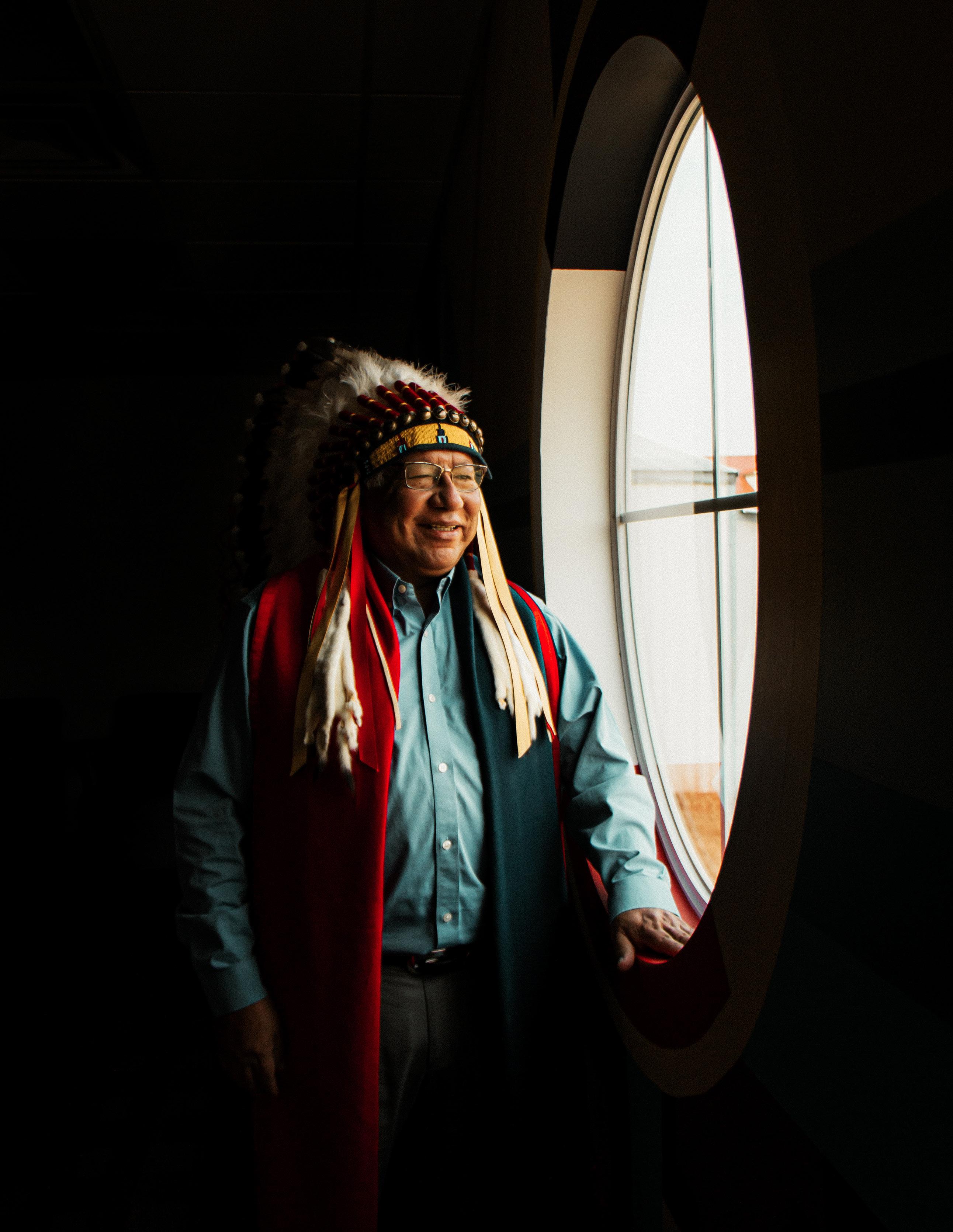

Three Essential Pillars for Supportive Housing in Indigenous Communities
CULTURAL HEALING, COMMUNITY BUILDING, AND RESTORATIVE JUSTICE
WHITE PAPER

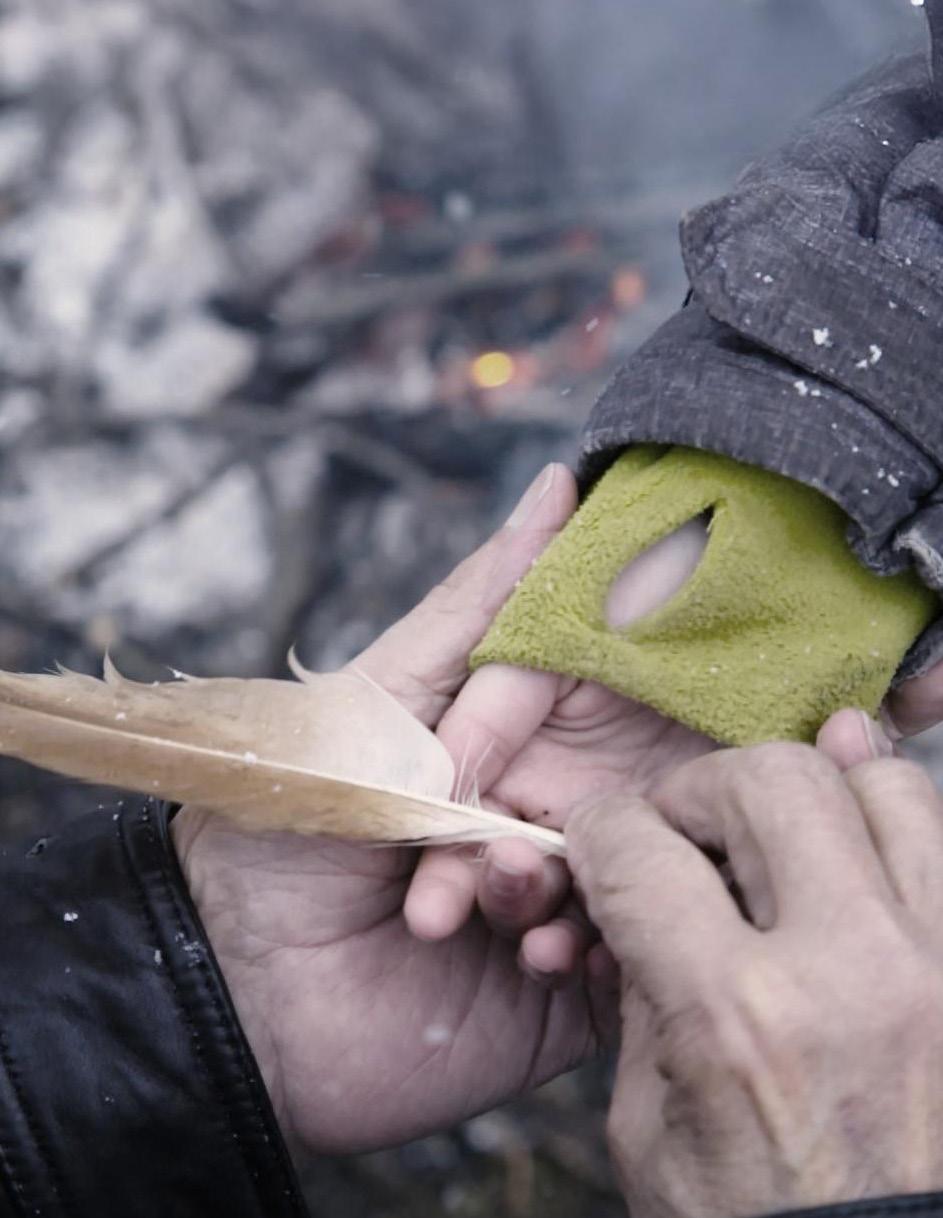
I have often reflected on an Indigenous phrase that holds deep significance: MnoBmadsen, which I’ve known to mean “the good path.” Others translate it as the good way of living. The phrase has to do with Indigenous identity and one's relationship to nature. The quote below shows the ubiquity of the sentiment across many languages.
Eloquent as it is memorable in its simplicity, the concept finds expression across a range of Indigenous languages, suggestive of a unifying epistemology: "Sumak Kaway" (Quechua), "mino-bimaadiziwin" (Anishinaabemowin), "xumilal" (Maya K'iche'), "nizhonigo" (Dine/Navajo), "wiñolün" (Mapudungun); the list goes on. It is a way of knowing that too many generations of colonizers have neglected to learn despite a prolonged awareness of this vital wisdom. (Spires, 2019, p.141)
When we think about supportive housing and other community-focused projects, we at Bodwé recognize that so much of what we bring to the table is already known by the Indigenous peoples we work alongside. By creating this document, we do not posit ourselves, or anyone else in the industry, as the answer. Still, we seek to be a resource for all those looking to develop systems of resiliency and support for their community members. We acknowledge the right of all to dignity, respect, and shelter; in some cases, supportive housing is a means of providing all three to the most under-resourced in our communities.

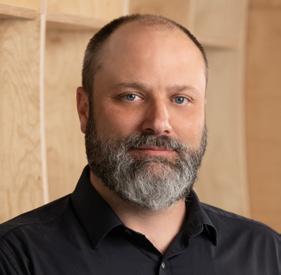
Jeremy Berg, AIA, NCIDQ, LEED AP BD+C President | Chief Operating Officer
Bodwé Professional Services Group (301) 661-4343 • jberg@bodwegroup.com







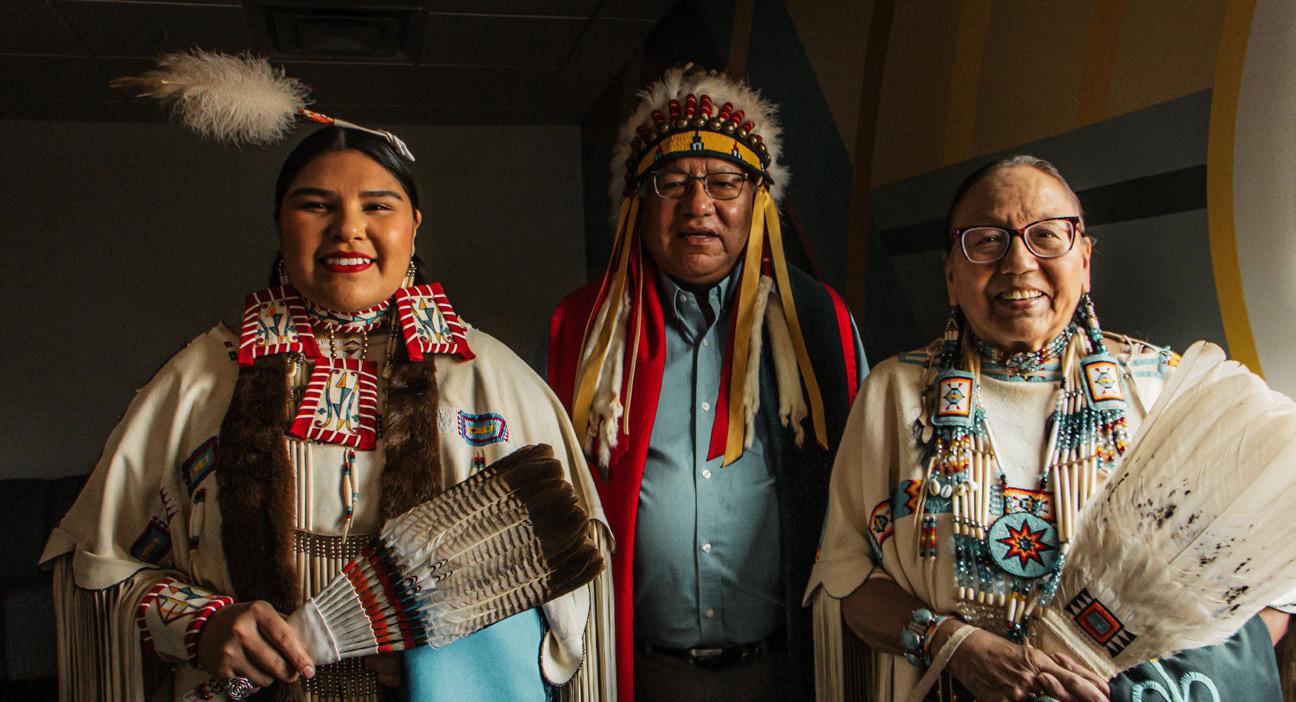
On The Cover
Cheyenne Chief and Cultural Artist, Gordon Yellowman, Sr., Winnie White Tail Mendivil, Program Director, and Katelynn Pipestem, Counselor Technician and Art Therapist, are among the many collaborators who, along with Blue Star Integrative Studio, helped envision the George Hawkins Memorial Treatment Center for the Cheyenne and Arapaho people.
The culturally responsive design and “Medicine Mural” room (shown on page 23) inspire healing and help teach the culture to those who may have become disconnected from their identity as Native American people.
Photo Credit: Sarah Allen
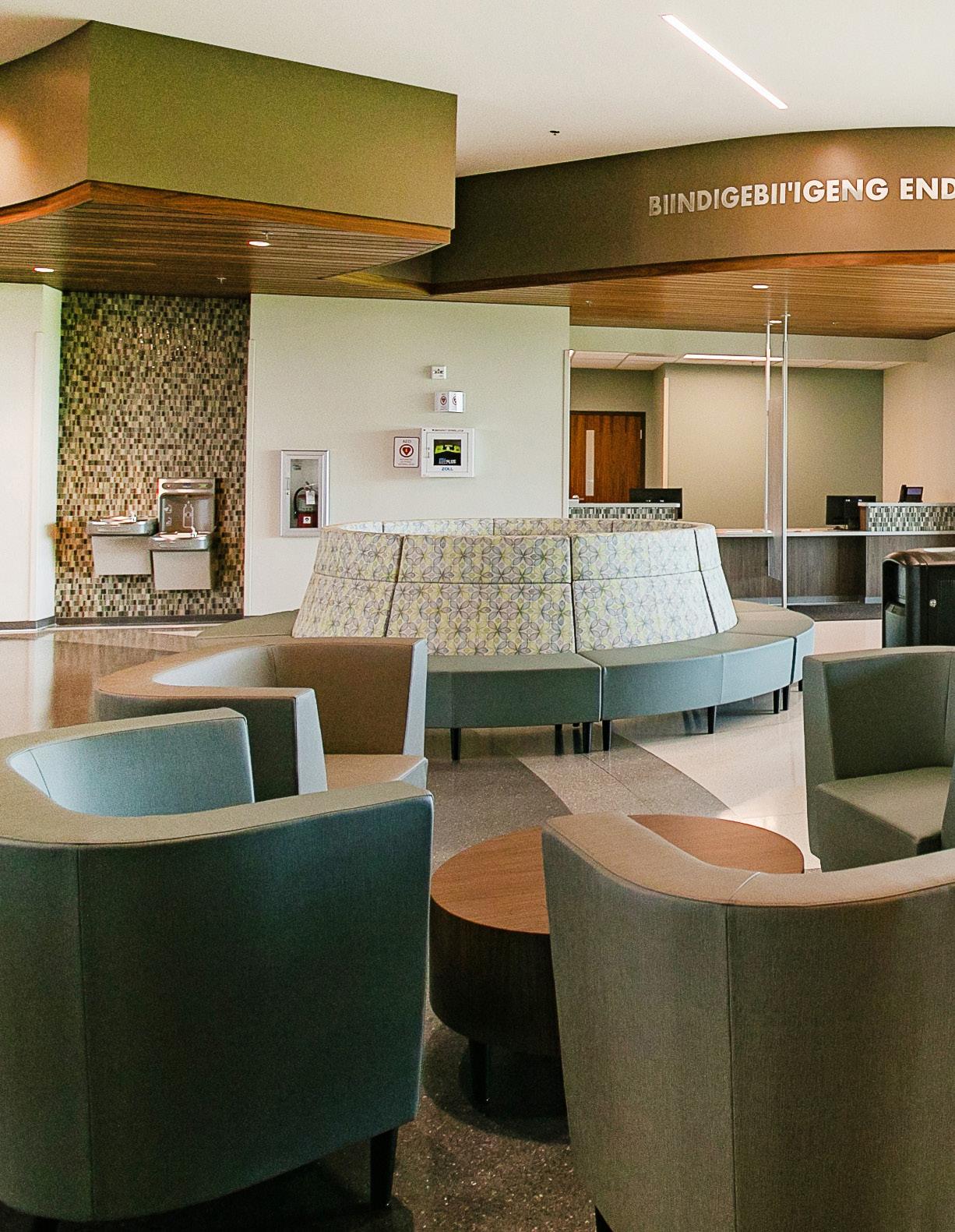
Mille Lacs Band District 1 Health Clinic
Mille Lacs Band of Ojibwe Onamia, Minnesota
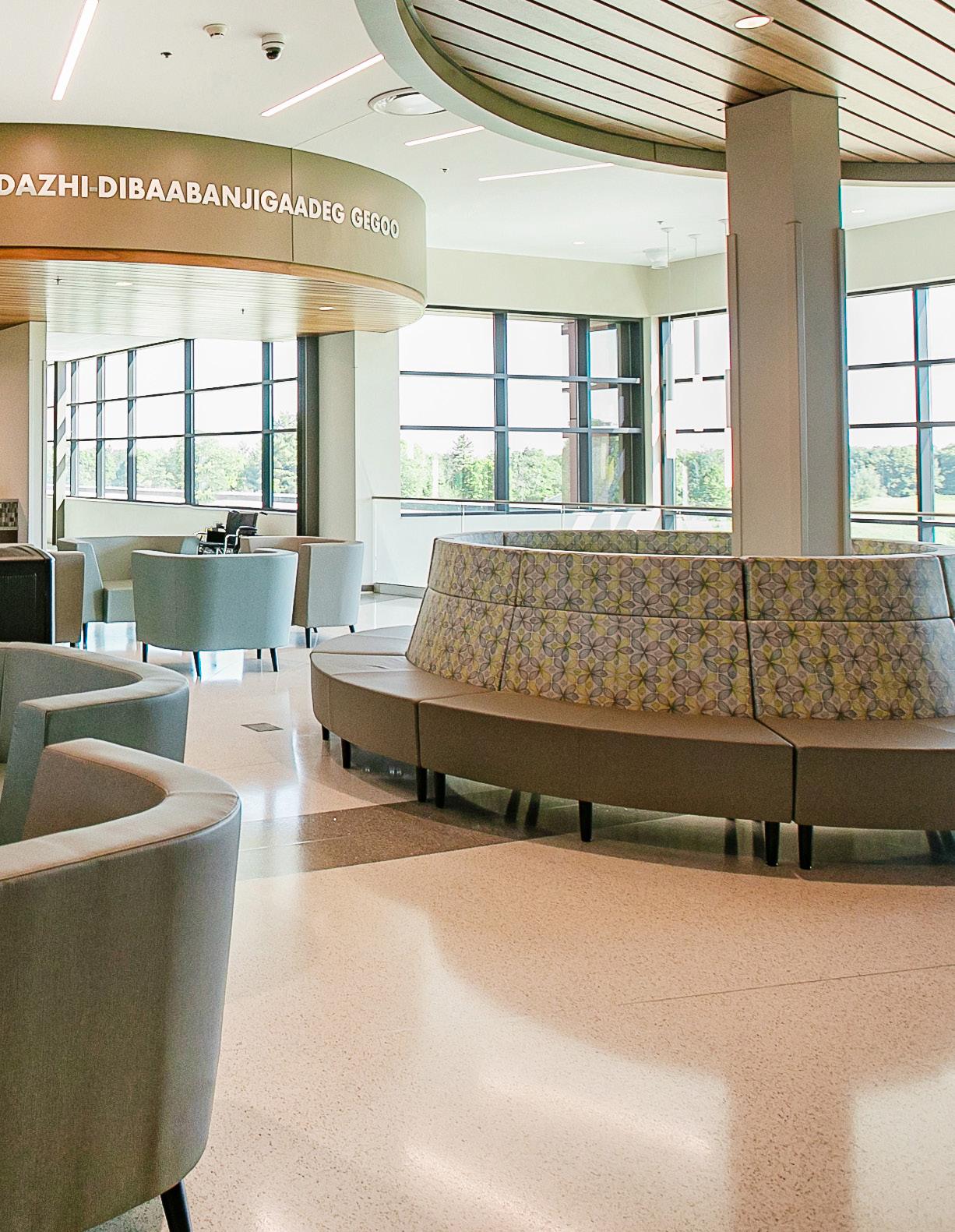
Introduction
Those who work with people who are chronically or acutely struggling and in need understand there is no miracle solution to deliver healing and stability. Support cannot come from only a single person or even a single entity. There are innumerable support services, healthcare facilities, and continuums of care designed to provide resources and healing, whether that be for substance abuse disorders, hunger and houselessness, or physical, mental, or emotional abuse or impairment. What can be underutilized or even overlooked in these systems of care is the integration of in-direct services and support from three additional areas that contribute to personal, holistic health: cultural healing, community building, and restorative justice.
This approach triangulates around core systems of support and onto each person in need, providing a multi-faceted support system for lasting recovery. Think of these types of support as the legs of a threelegged stool. The geometry of a three-legged stool is unique; the bottoms of all three legs lie in the same plane, evenly distributing
the weight. Three points of contact allow each of the legs to always maintain contact with the ground, eliminating wobbling.
During recovery, individuals need connection, stability, and resources to stay on track. This aligns with the philosophy of many Tribal and Indigenous communities. Rather than adopting an individualistic approach to health or happiness, a collectivistic perspective brings together and encourages acceptance of support from the greater community comprised of family, friends, medical professionals, native healers, community leaders, and pillars of justice, equity, and peace.
In this white paper, we will examine the research revolving specifically around supportive housing systems of care and how best to surround those whom it can benefit. Existing literature on the topic will be supplemented with rich qualitative sources provided by those with extensive experience in Tribal supportive housing and the three significant elements of cultural healing, community building, and restorative justice.
Cultural Healing
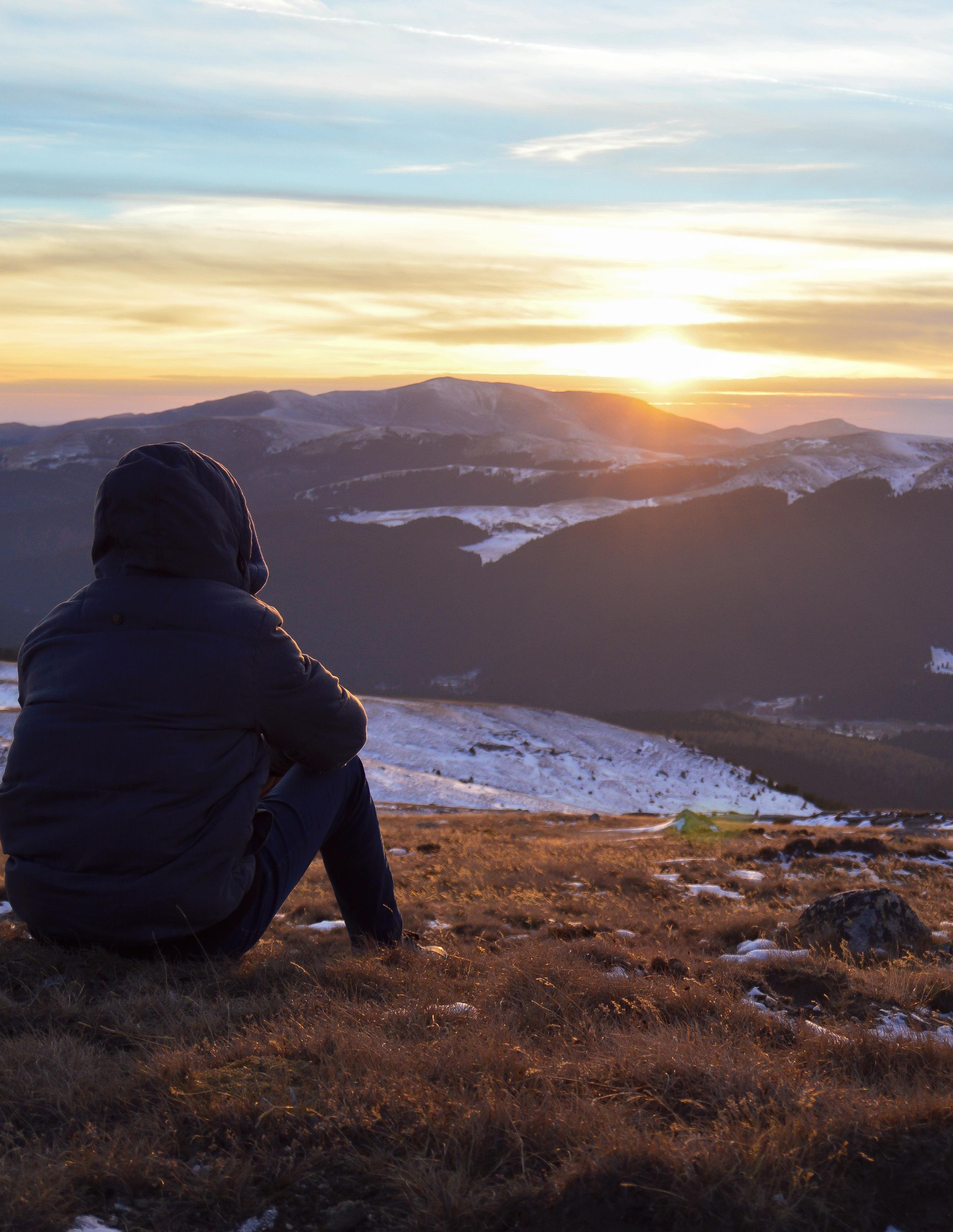
Health & Wellness Services
Community Building Restorative Justice
What is Supportive Housing?
While the goals and approach to supportive housing can vary significantly, a comprehensive way to sum up supportive housing is to think of it as "a combination of housing and services intended as a cost-effective way to help people live more stable, productive lives" (Michigan's Campaign to End Homelessness, 2021). Viewing supportive housing through this broad lens allows it to be inclusive, providing support for all those who need it.
Who benefits from supportive housing?
Many different services and housing types can fit under the umbrella term of supportive housing. Individuals who might seek out or need supportive housing might be struggling with any of the following complex circumstances:
• Individuals who are permanently or temporarily unhoused
• People struggling with substance abuse disorders
• Those with physical, mental, or emotional impairment
• Women, men, or children suffering from abuse
• Veterans in search of additional resources
• Anyone in need of temporary support
All people deserve to have safe shelter. Homes, even temporary ones, offer dignity. Housing meets immediate needs critical to survival, and it can also reinforce the value of human life. Providing individuals with a home offers a foundation for making choices that allow them to heal, grow stronger, and seek out resources with dignity.
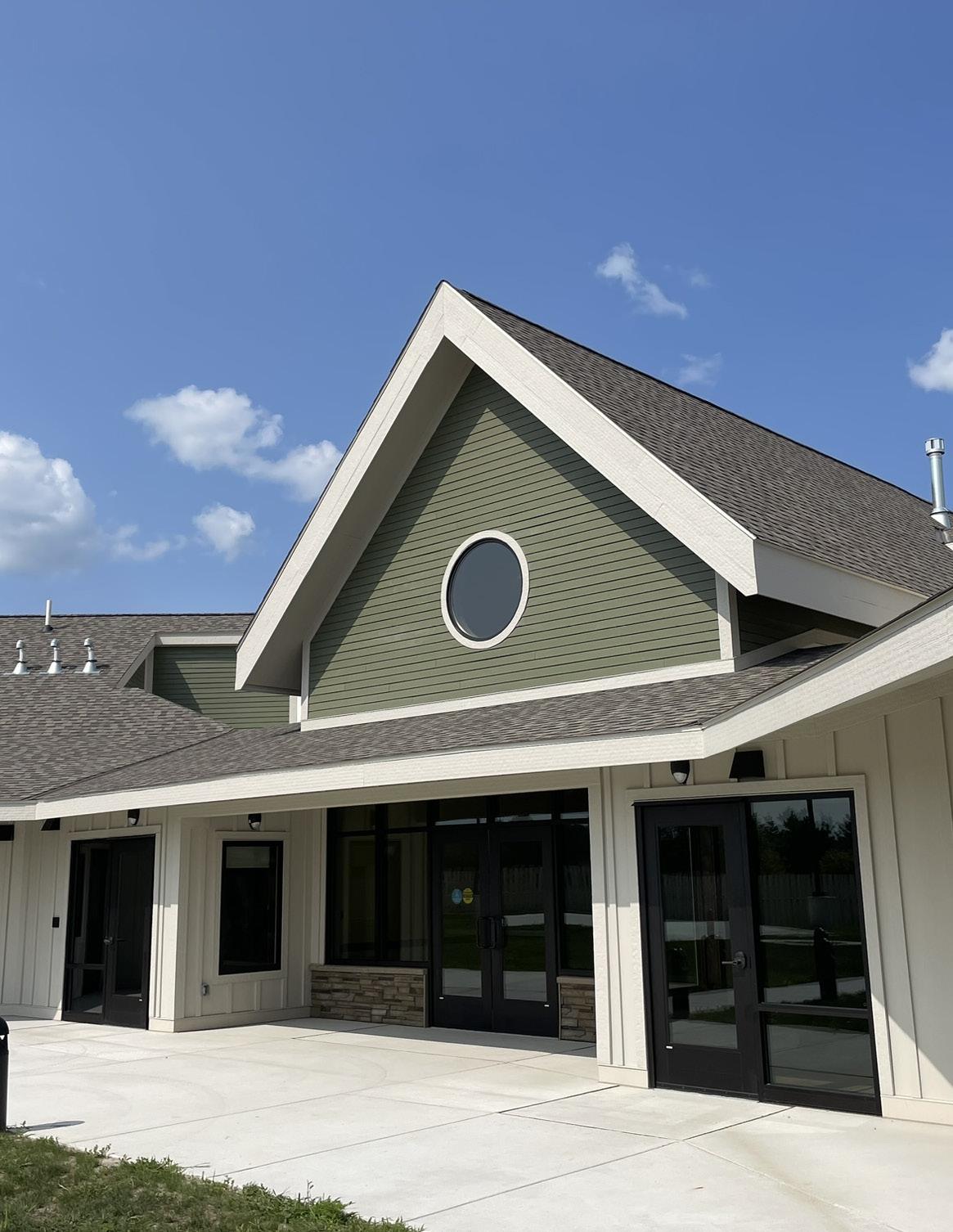
Saginaw Chippewa Apartment Complex
Saginaw Chippewa Indian Tribe of Michigan
Mt. Pleasant, Michigan
While shelter is undoubtedly an essential element of supportive housing, it is far from the only component. Supportive housing provides a centralized source of support in all its forms. That might start with basic needs such as dining or cooking facilities, spaces for cultural ceremony, and safe outdoor areas to be active, but it can also include any of the following services:
• Drug and alcohol abuse programs
• Individual or group counseling
• Native language and cultural teachings
• Medical or psychiatric care
• Traditional healing and medicine
• Case management
• Life skills training
• Educational opportunities
• Job training
• Legal aid
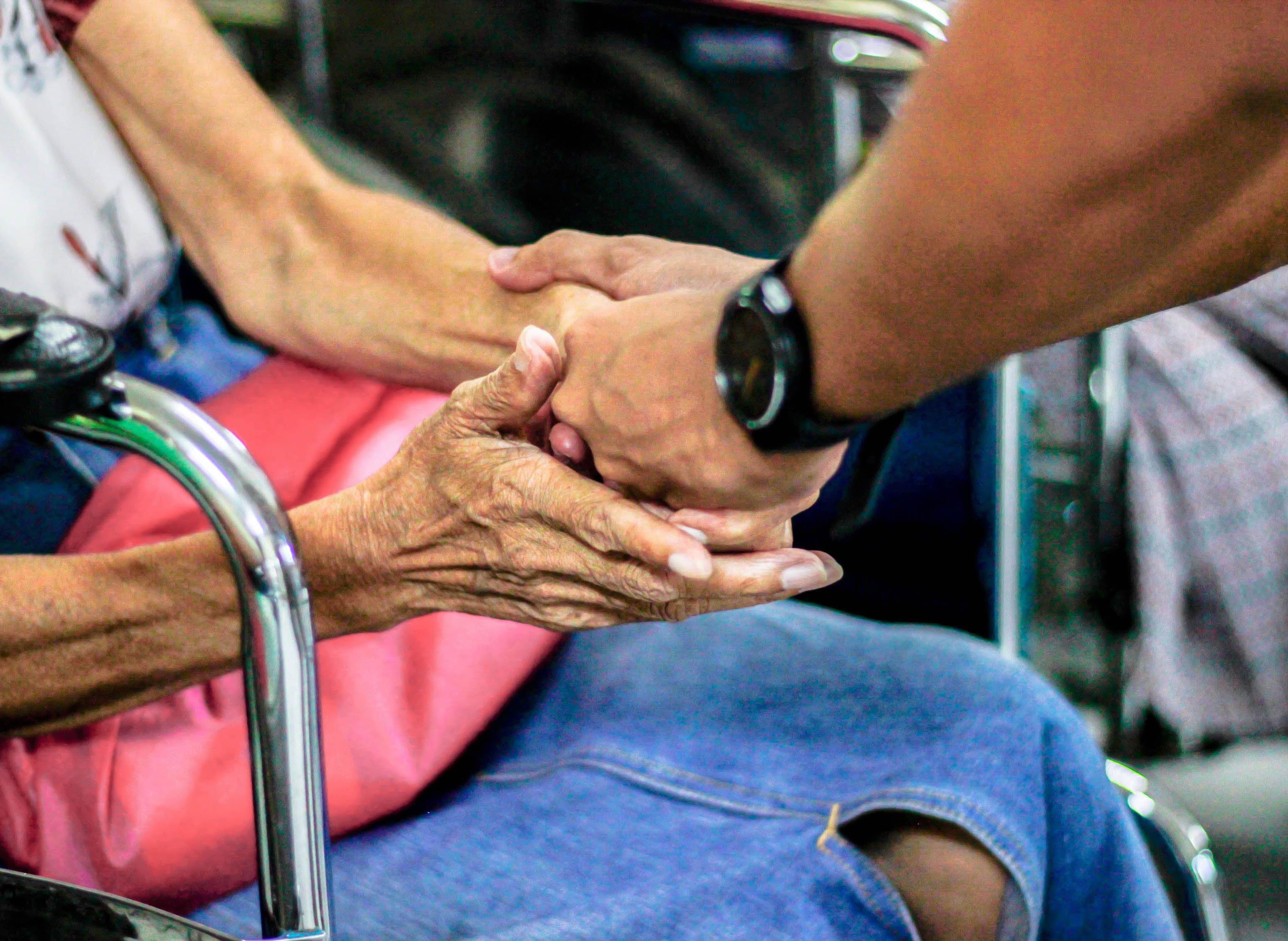
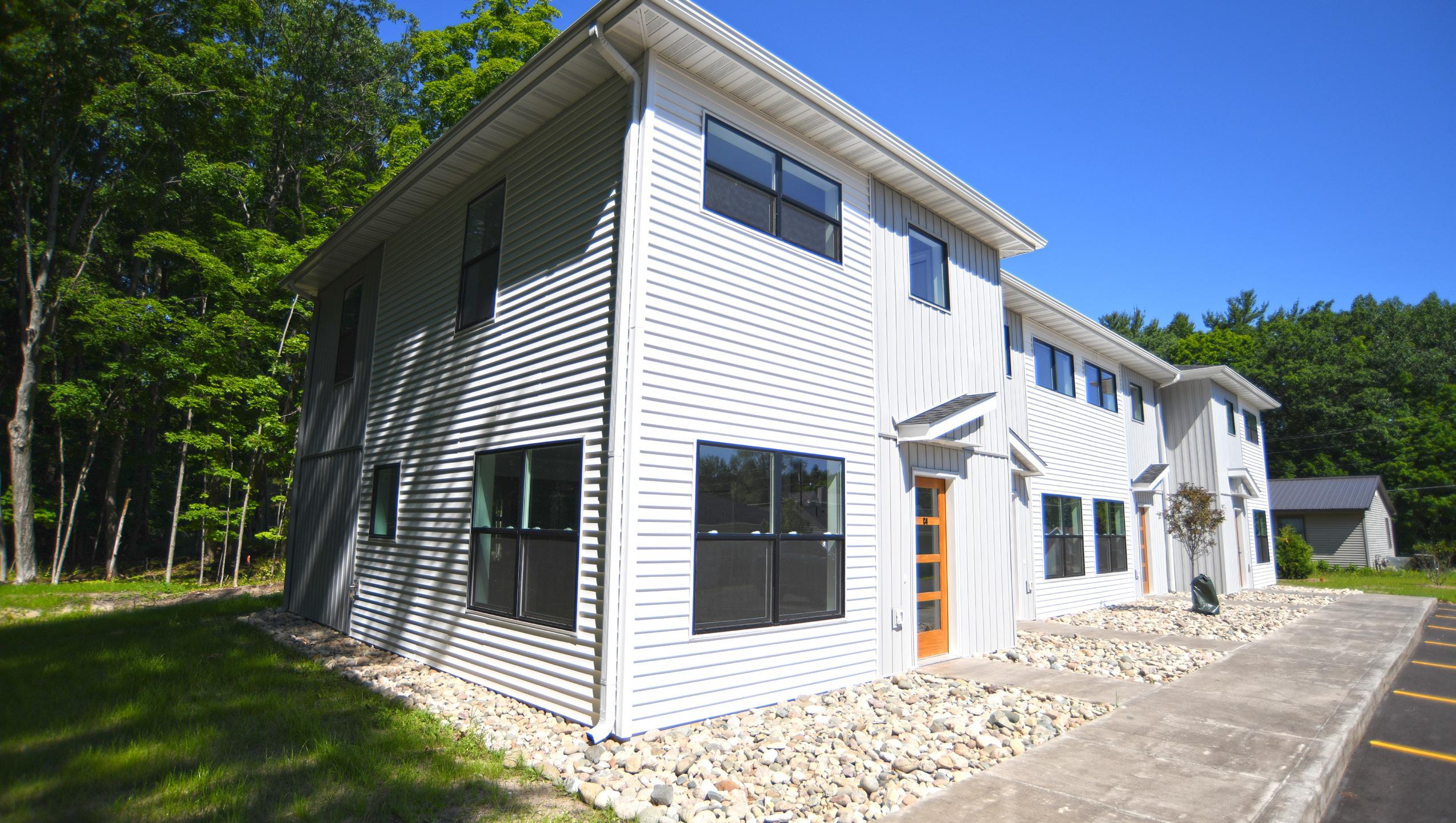
Transitional v. Permanent Supportive Housing
Supportive housing is for those who need support, whether long-term or short-term in nature. To accommodate the varied needs of individuals, there are two primary types of supportive housing-transitional and permanent.
• Transitional or temporary supportive housing (TSH) provides short-term or emergency support for those in crises. It is not intended to be a long-term solution. While in transitional supportive housing, participants can access the resources necessary to find a more permanent housing solution. These can be critical for those in emergencies, but there are limits to the length of each stay.
• Permanent supportive housing (PSH ) provides residents with a longterm home of their own. Typically, residents will have a lease for their home, and they may be required to pay an affordable rental fee depending on the facility. PSH is especially effective in the fight against homelessness (Gilmer, Henwood, & Katz, 2014 ). In one 2010 study conducted by the U.S. Department of Housing and Urban Development (HUD), over 80% of people in permanent supportive housing had diagnoses related to mental health or substance abuse disorders; many also had co-occurring medical conditions or age-related functional limitations (Gilmer, Henwood, & Katz, 2014 ). Without permanent supportive housing, many of these people would have nowhere else to go.
Second Street Housing
Little Traverse Bay Bands of Odawa Indians Harbor Springs, Michigan
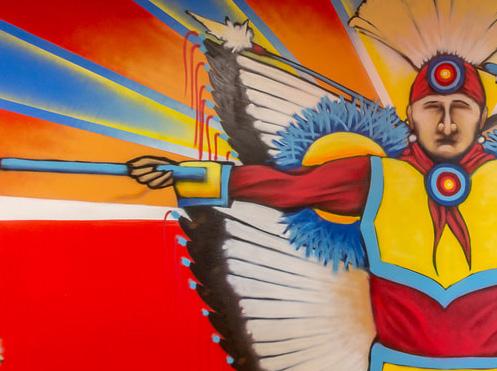
The Role of Cultural Healing in Supportive Housing
Compared to all other racial or ethnic groups, Native Americans and Pacific Islanders are the most likely to experience homelessness and house-lessness in America (National Alliance to End Homelessness, 2021). Roughly 16 out of every 1,000 Native Americans and Pacific Islanders are unhoused, while the national average is less than two. Indigenous people in the United States, including Alaskan Natives, are especially at risk, making supportive housing a top priority in many Tribal communities. Supportive housing typically includes access to medical services. Supportive housing that serves Indigenous people should recognize the role of culture in the healing process. In the words of one Native American Healer:
Our Creator doesn’t make mistakes. That’s sort of the basic thing I teach people who don’t know their culture who want to know “Why should I learn it?” I tell them—I ask them first, “Do you believe in God? Do you believe in the Creator?” Yeah, I do. “You think He makes mistakes or She makes mistakes?” No, He doesn’t make mistakes. I go, “He gave you your culture, right? Where do you think that culture came from?” It came from God, okay, so when you don’t have it, that culture is medicine to you.
(Bassett, Tsosie, and Nannauck, 2012, p.23)
Ponca Hope & Recovery Center
Ponca Tribe of Oklahoma White Eagle, Oklahoma
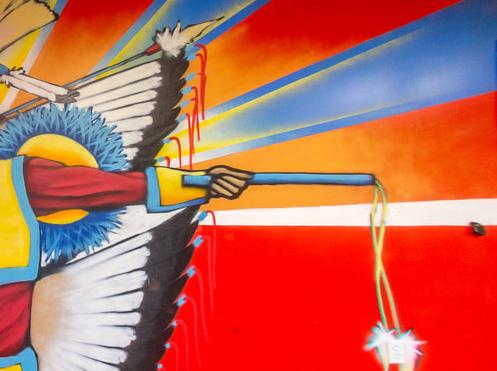
If culture is medicine, then supportive housing must have more than Western ideals of care available to residents. Culturally reflective healthcare spaces have the potential to reinforce feelings of belonging, ensuring that all residents understand the connection that exists between them and their loved ones as well as the larger community.
In addition, healthcare spaces that reflect patient identity might have a positive impact on patient compliance. After centuries of trauma, many Indigenous people are wary of medical professionals (Beaulieu-Banks, 2018). By creating healthcare spaces that seek to connect with patients, supportive housing providers may more effectively reach individuals in need of help. Culturally reflective healthcare spaces are about much, much more than just Tribal patterns appliqued onto existing designs. Truly reflective spaces are designed with users in mind. Inspiration might come from clans, music, language, or any elements of history and heritage that specific communities rely on as cultural touchstones.
Steve VandenBussche, AIA, LEED AP, Former Vice President of Practice at Seven Generations Architecture + Engineering , has designed a number of culturally reflective spaces that provide healthcare and housing to Indigenous populations.
“Cultural integration is more than just researching and identifying images associated with a particular Tribe or community,” says VandenBussche. “To truly identify the symbology and culture of a people, engagement is required. Only then, after many conversations that primarily involve listening on my part, can we begin to integrate cultural indicators that reflect the identity of those who will use the spaces.”
At one facility designed for the Mille Lacs Band of Ojibwe, biophilic design is used to connect occupants with nature, with native materials linking patients with the natural environment. Additionally, the importance of inland lakes is vital to the Ojibwe in the Minnesota area and the connection to the wetland on the site was an opportunity to enhance that connection. The building was intentionally placed on the site to orient to the east and align with the Tribe’s spiritual connection to the four directions. The large, east-facing glass curtain wall allows vast views of the wetland from all waiting areas throughout the clinic.
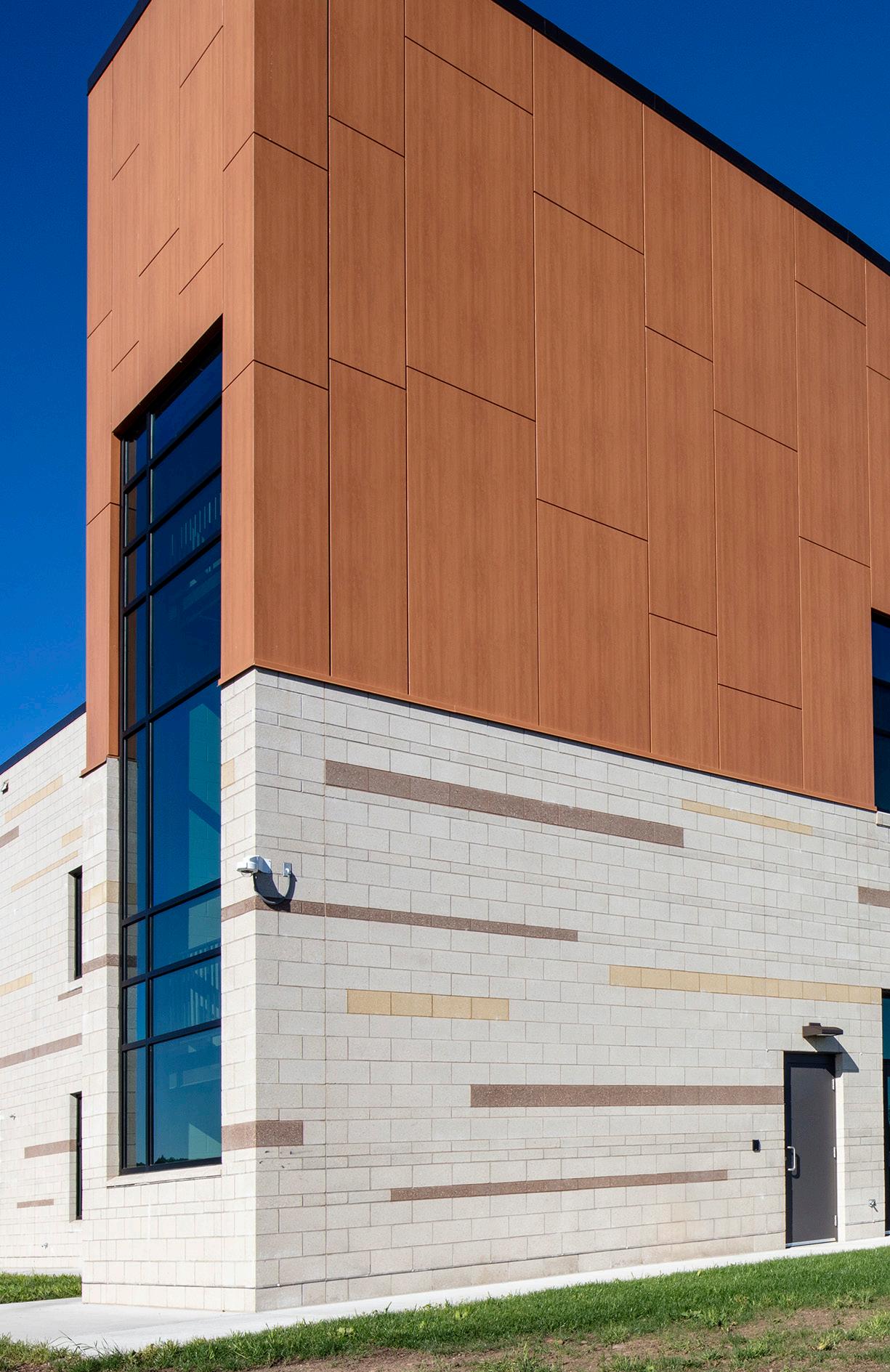
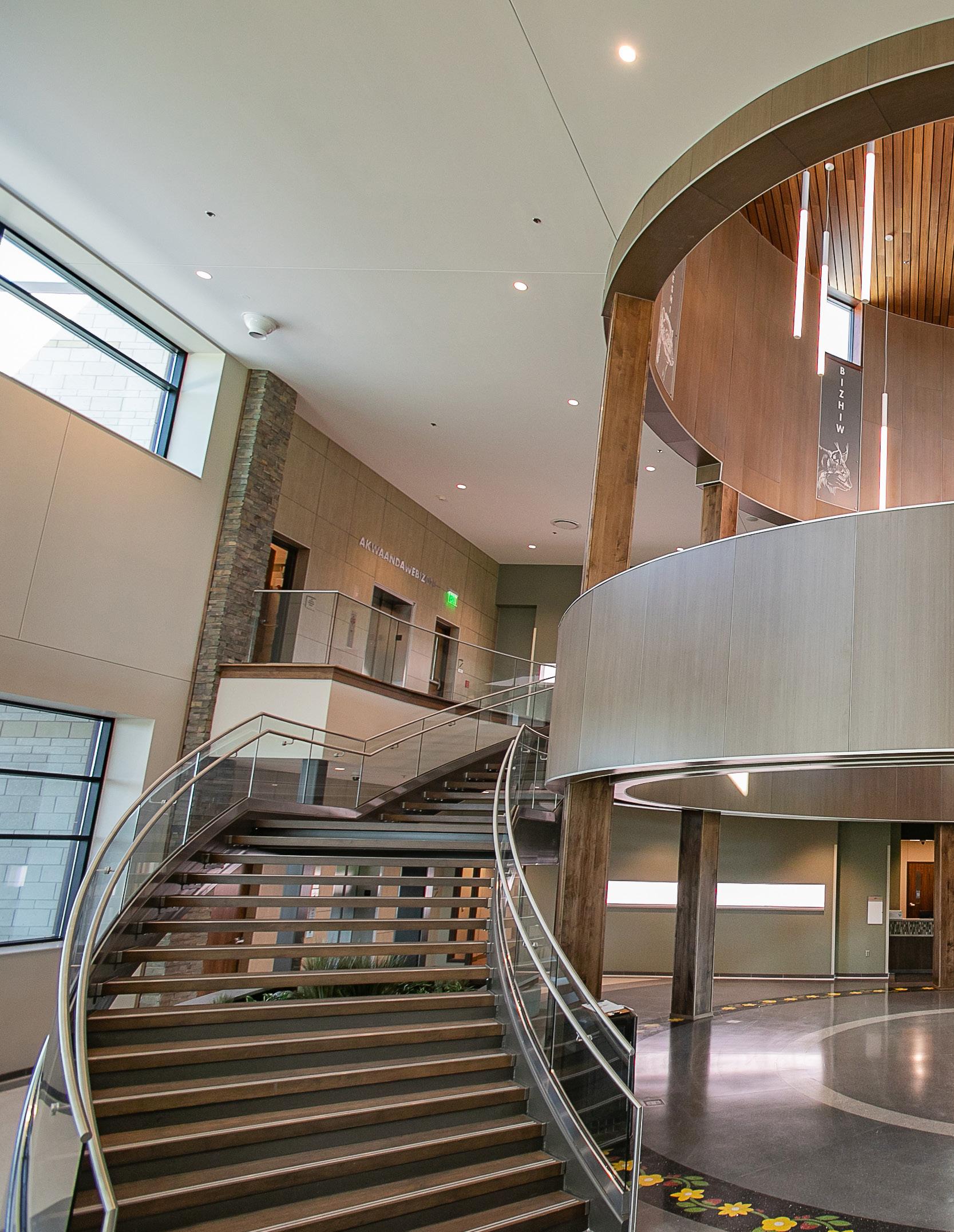
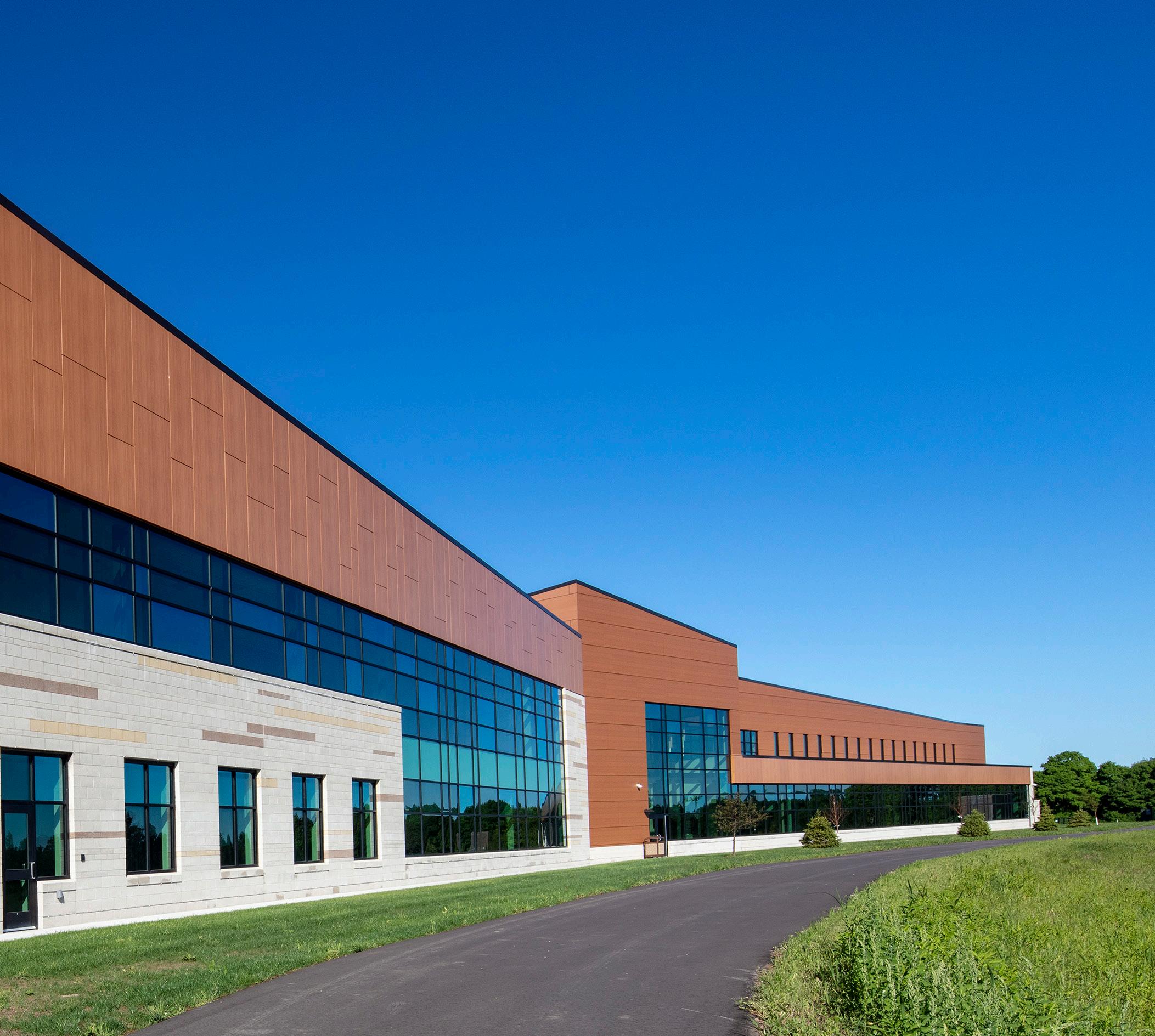
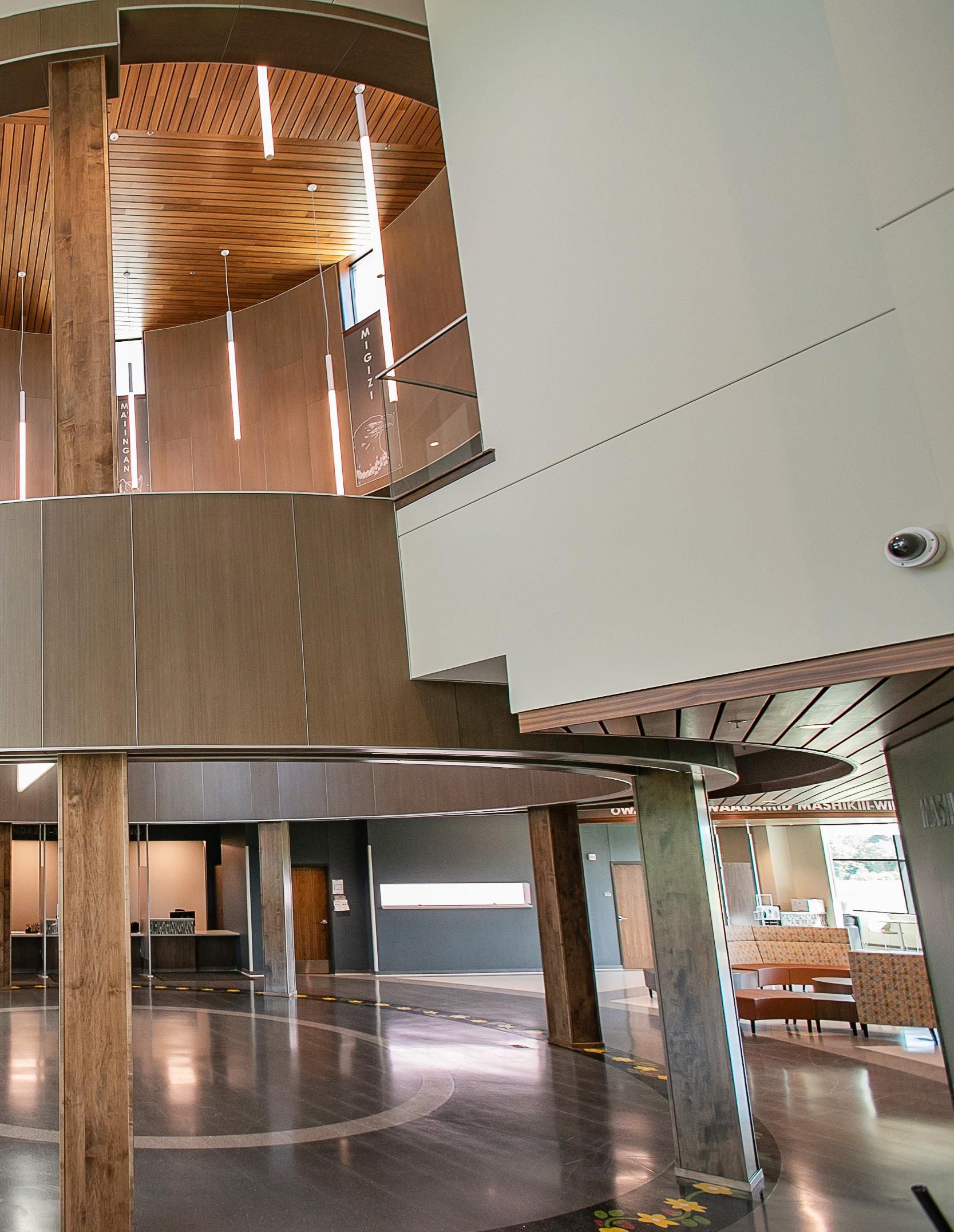
Mille Lacs Band District 1 Health Clinic
Mille Lacs Band of Ojibwe Onamia, Minnesota
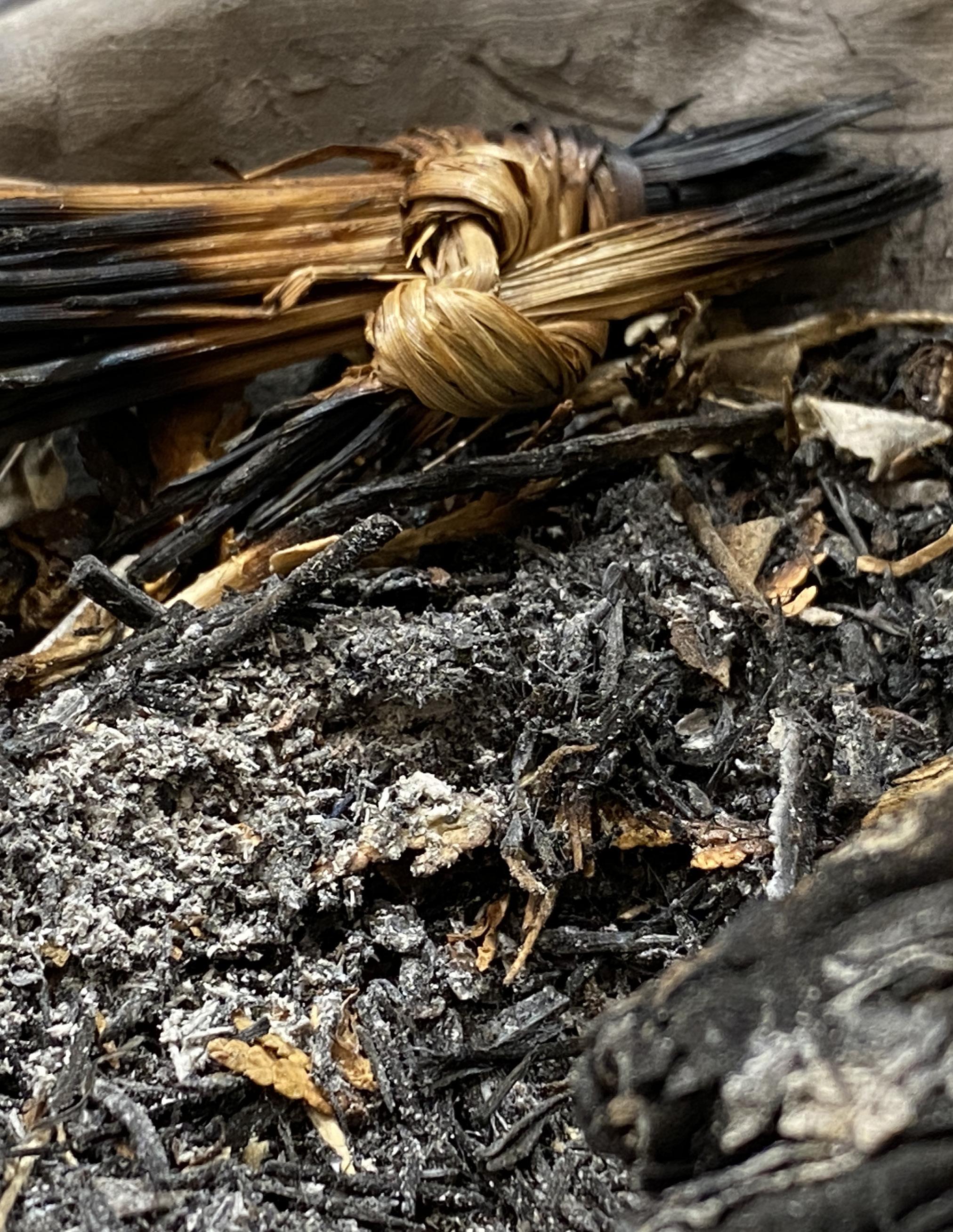

Spaces to Facilitate Cultural Participation
There is no questioning the importance of medical care in supportive housing. Many residents will need access to healthcare providers that can address a myriad of potential health concerns. However, modern medicine is not the only way to provide healing resources in supportive housing environments.
Supportive housing facilities should look to the cultural heritage of their residents to determine what types of healing spaces and traditions should be available or integrated into the program. For example, if smudging is a common practice within a community, then factors like operable windows or exhaust systems will need to be a priority. These practices can facilitate cultural restoration, encouraging residents to strengthen their community ties and feel connected to their families, history, and culture.
Once again, there is no cookie-cutter, pan-Indigenous way to incorporate culture. Instead, designers must listen to leaders, elders, and patients within the communities served and ask questions to understand what kinds of ceremony, tradition, and lifeways will support healing for each group.
The Role of Community Building in Supportive Housing
Supportive housing “builds on the concept that certain populations may require extra support in order to live independently” (Owczarwak, 2013). However, even if the goal is independence, supportive housing does not mean living in isolation. A key component of successful supportive housing is that residents get support not just from staff members or support professionals but from their coresidents. Building a community is no easy feat, but it is critical to supportive housing that can positively impact all those involved.
Supportive housing might put people in the same location, but simply being in the same spot does not make a community. To ensure
that supportive housing brings people together in positive relationships, those in charge have to intentionally build that community.
According to Creed’s definition of community (2006), individuals need to be in the same place. All types of supportive housing services share the common foundation of housing. Homes provide more than just shelter: They offer comfort and privacy as well as a sense of stability. When building a community, there is plenty of actual building that needs to be done. In addition to the physical housing, a community should provide residents with a feeling of dignity, accessible facilities that nurture health, and connections to culture and to one another.
To create community, it is first important to define it. There are just as many ways to express community as there are communities themselves. Traditionally, using the word community about a population implies three things: 1) A group of people exists, 2) those people share a certain quality of relationship, and 3) they share a place or location of some kind (Creed, 2006).
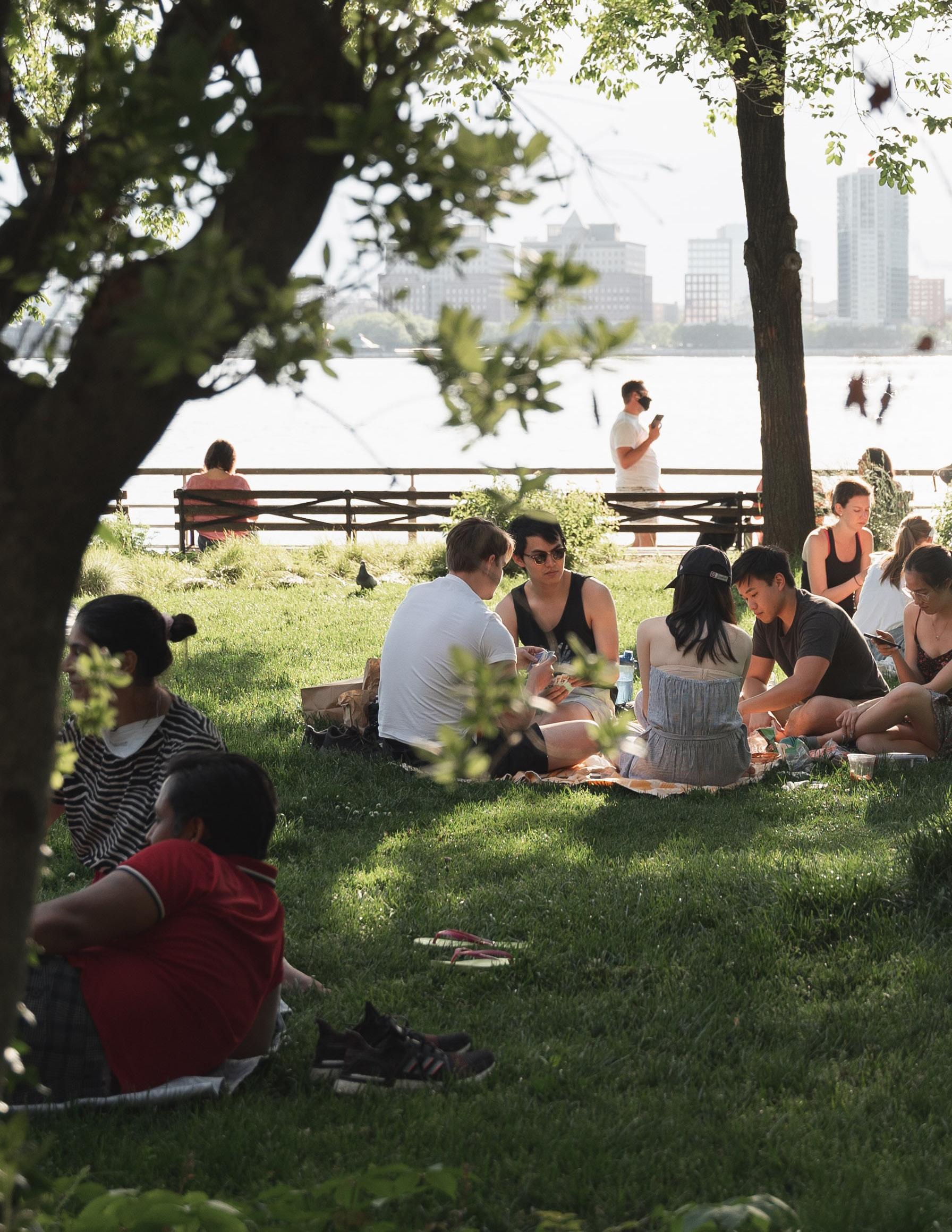
Individual and Community Dignity
One resident in a supportive housing facility described living there as a way to get a sense of control over their physical and social environment. A major benefit to her was privacy because, “You can put your own key in your own lock and shut yourself away from all the other ills of the world.” (Owczarwak, 2013, p. 260). What is clear in her words is that individuals deserve to have a sense of control over their lives. Since the advance of colonization in the Americas, Indigenous people have not been afforded that right; many still do not have privacy, stability, or mobility. The dignity of a private, safe shelter to call one’s own reminds residents that their lives hold inherent value.
To that end, supportive housing is designed with dignity in mind. While budget is almost always a constraint, supportive housing projects should still allow residents to feel connected to nature. Sustainable designs can be affordable, and environmentally responsible construction reminds residents of their relationship and responsibility to the Earth and future generations. Environmental comfort comes in many forms, including flexible heating, cooling, and ventilation options. This is especially important for residents who are actively recovering from substance abuse or from homelessness. Many of us take the ability to regulate temperature
and achieve comfort for granted, but it, too, aids in the dignity and resilience of recovery.
Personal space and the ability to store personal items are crucial within supportive housing. Residents deserve a place to keep their items of personal or cultural significance safe and accessible. Spaces need not be large, but they should be functional, durable, and require minimal maintenance. In addition, there should be options for long-term residents to customize their spaces. This could be something as small as displaying meaningful artwork or choosing bed linens that reflect their style. Having small ways to personalize a living space allows residents to feel settled. Even if supportive housing is just a temporary solution for some residents, it should feel like a home rather than just a transitional space.
While housing starts with a place to sleep, having additional space for hygiene, cooking, and relaxation encourages each of those activities. Cooking, for example, is a skill that can significantly contribute to a person’s health and wellbeing, yet many new residents in supportive housing facilities do not cook regularly. Providing a small, clean space to begin building or relearning cooking skills can pave the way for a healthier diet as well as the dignity of preparing food for oneself and for others.
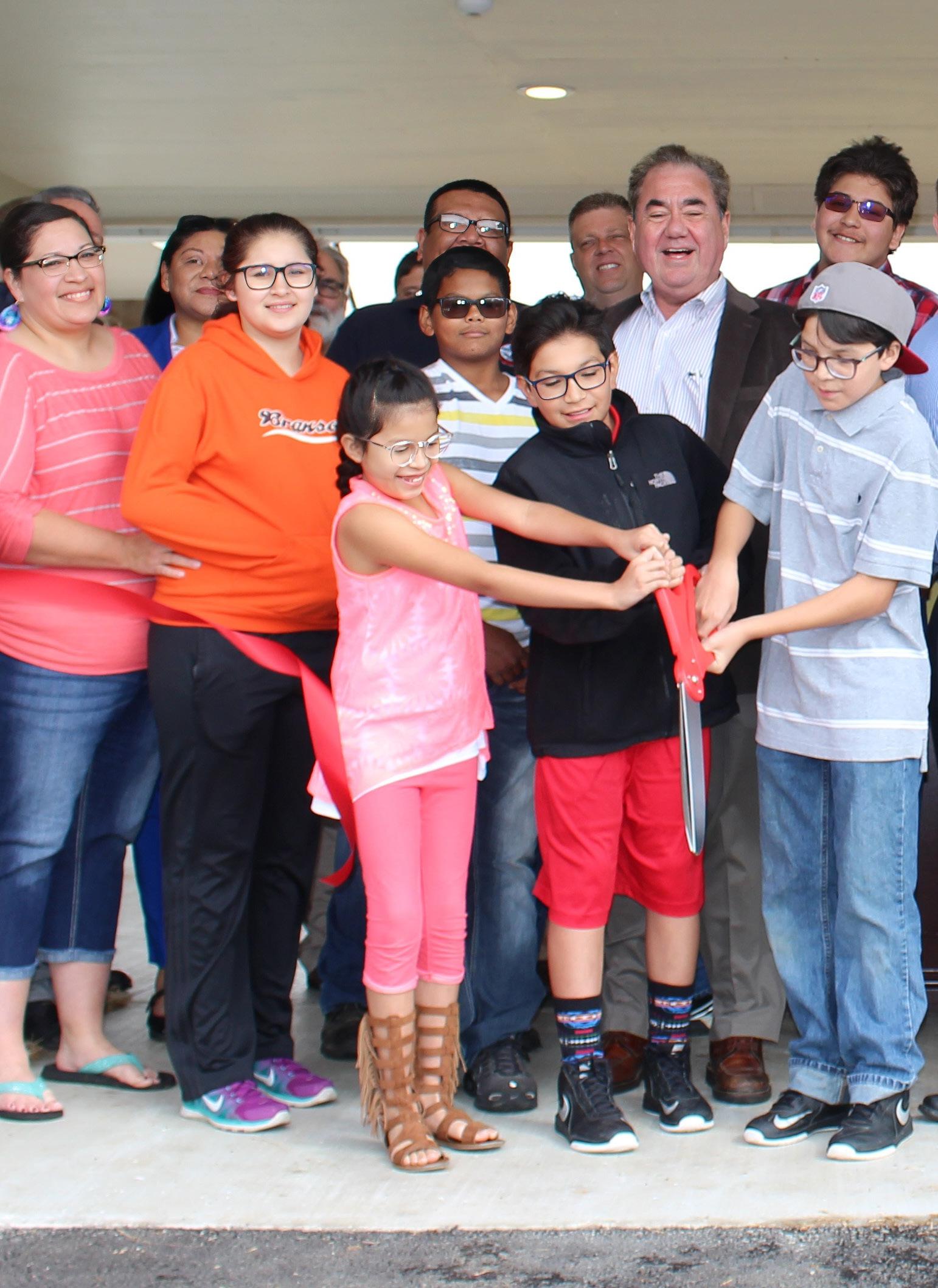
Facilities to Improve Health
Beyond an individual's private living quarters, supportive housing can include any number of facilities that strengthen residents' capabilities and provide healthy options for exercise, socializing, and relaxation.
A community garden, for example, can increase both health literacy and nutrition. In addition, gardening can offer health benefits like increased exercise, social contact, caring, and psychological harmony (Ruck, 2020). A community garden can also create a mechanism through which clinicians and residents co-create something together. This can change the dynamic and make interactions more relaxed and potentially more effective while simultaneously creating opportunities for movement and increased connection to the Earth. For Indigenous people, this is especially important. Having a tangible link to the land is a means of calling back the spirit, contributing to the healing process.
In addition to gardening, facilities should include spaces for physical recreation and outdoor relaxation. This could include but is not limited to an outdoor track, a fitness center, walking trails, and quiet spaces for yoga or meditation.
Facilities should also prioritize and encourage socialization by providing access to communal spaces. A simple room with comfortable seating, art supplies, and books might encourage residents to create with and learn from each other. These spaces are not "extras" – they are foundational to a successful supportive housing facility that encourages relationships and allows residents to feel less alone.

Bay Mills Indian Community Elder Housing Bay Mills Indian Community Brimley, Minnesota
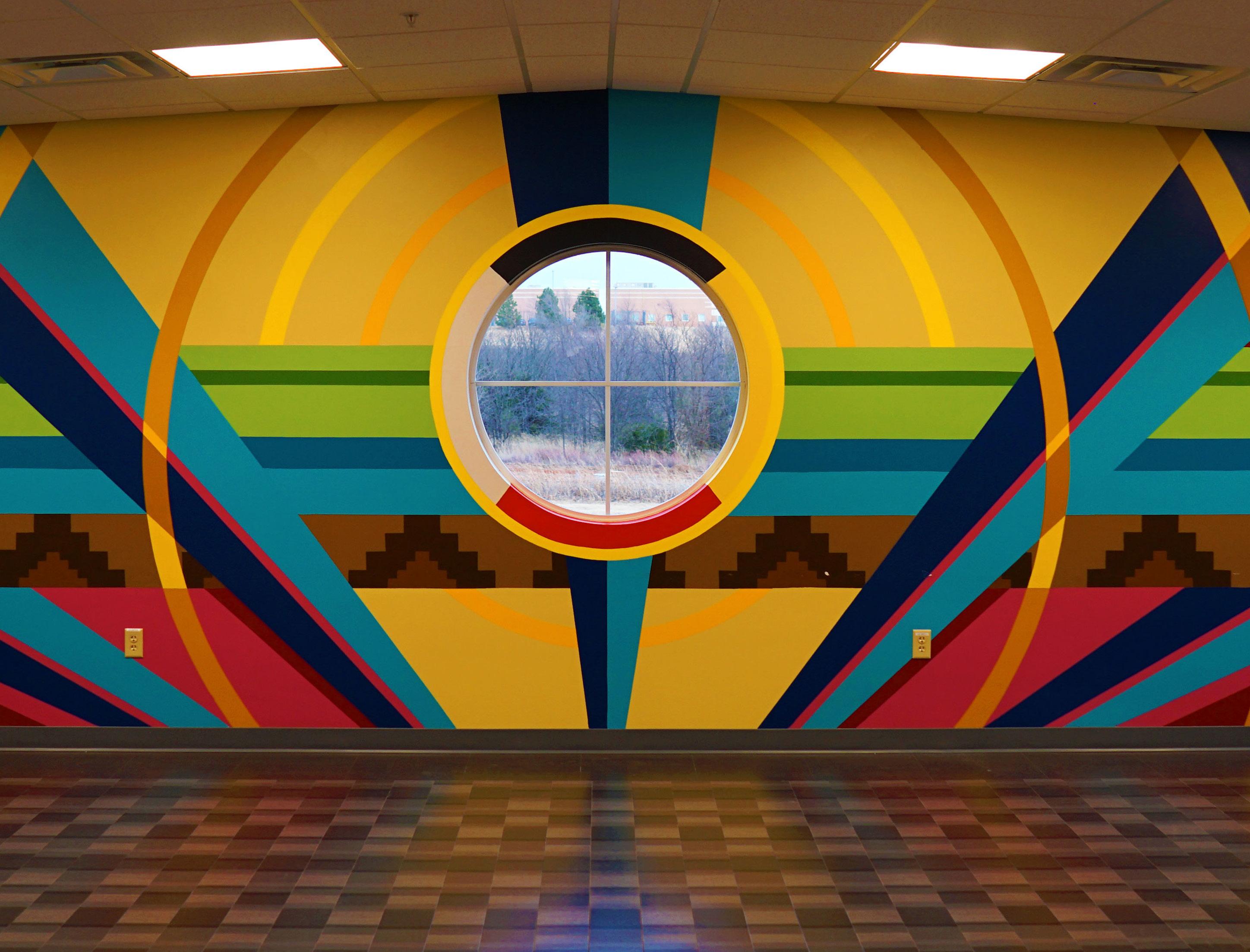
Programs that Foster Connection and Belonging
In addition to creating physical spaces to foster relationships, supportive housing should coordinate the actual programs that reinforce culture and belonging. We know that community and belonging are sources of support during times of crisis ( Ahn, 2016). We also know that individuals derive meaning from belonging (Carpiano and Hystad, 2011). People in need of supportive housing are also often in times of crisis. Striking up a conversation organically can be challenging, but coordinated programs facilitate the creation of friendships and the sharing of cultures.
Community belonging is described as “the degree to which an individual is, or perceives to be, connected to their community” (Perry and Carpiano, 2012). A sense of community belonging can encourage the adoption of specific health behaviors. Therefore, it is the interest of every supportive housing facility to create programs that improve the sense of community belonging.
George Hawkins Memorial Treatment Center Gheyenne and Arapaho Tribes Clinton, Oklahoma
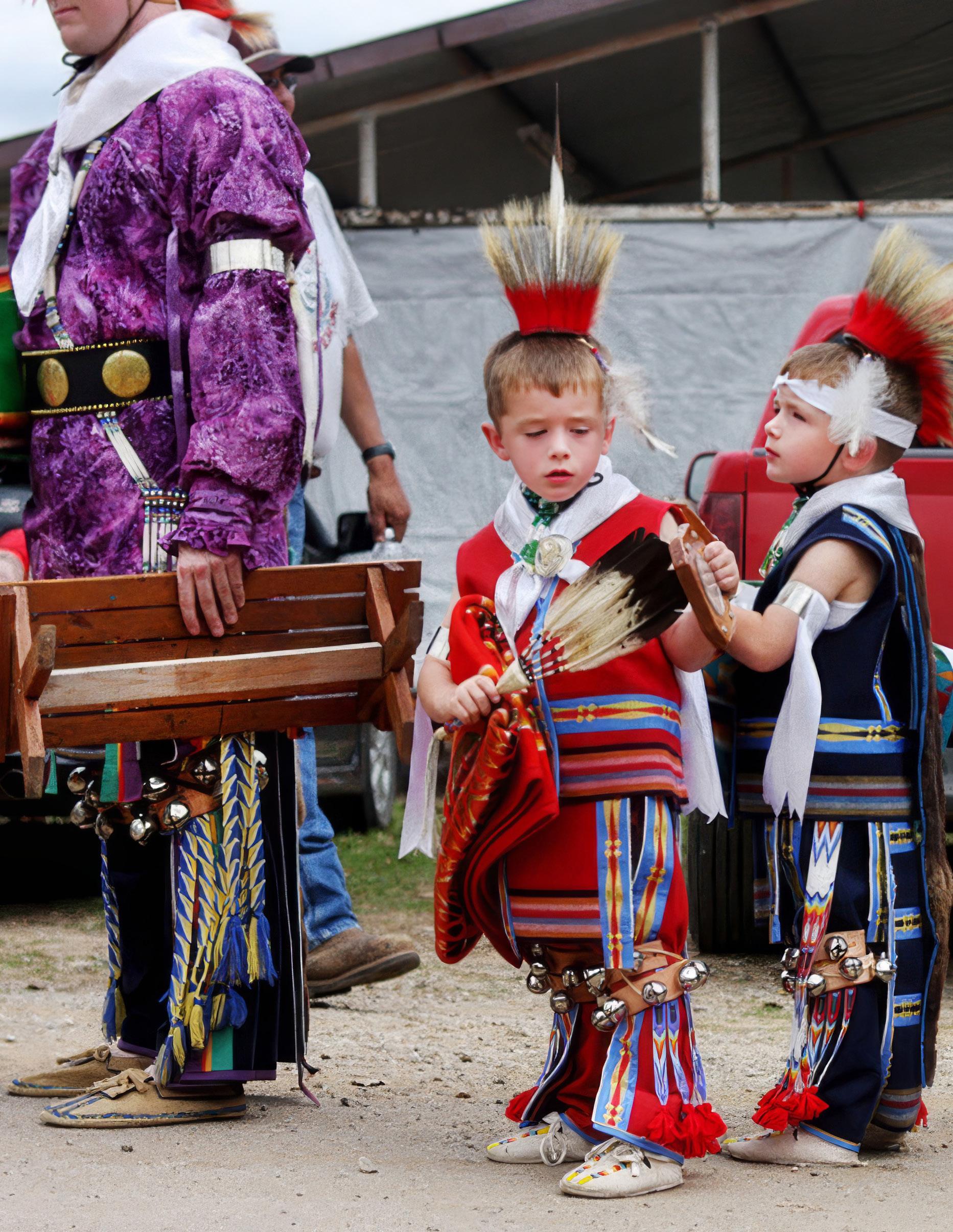
For those whose culture is not the dominant culture in society, connection is even more important.
Individuals need safe spaces to reflect on their history, practice their traditions, speak their native language, and otherwise participate in their culture without discrimination or difficulty. For many groups, this has not historically, or even contemporarily, been possible. For Native Americans and other people suffering from systemic and intergenerational trauma, establishing community is critical for lasting recovery and stability.
Residents will also need to have access to the greater community beyond the supportive housing facility. Ideally, they should have several ways to stay connected with society. Having access to public transportation, for example, means making it easier for residents to take a bus and visit family or just pick up groceries from a local store. When infrastructure allows, having walking paths is also advantageous.
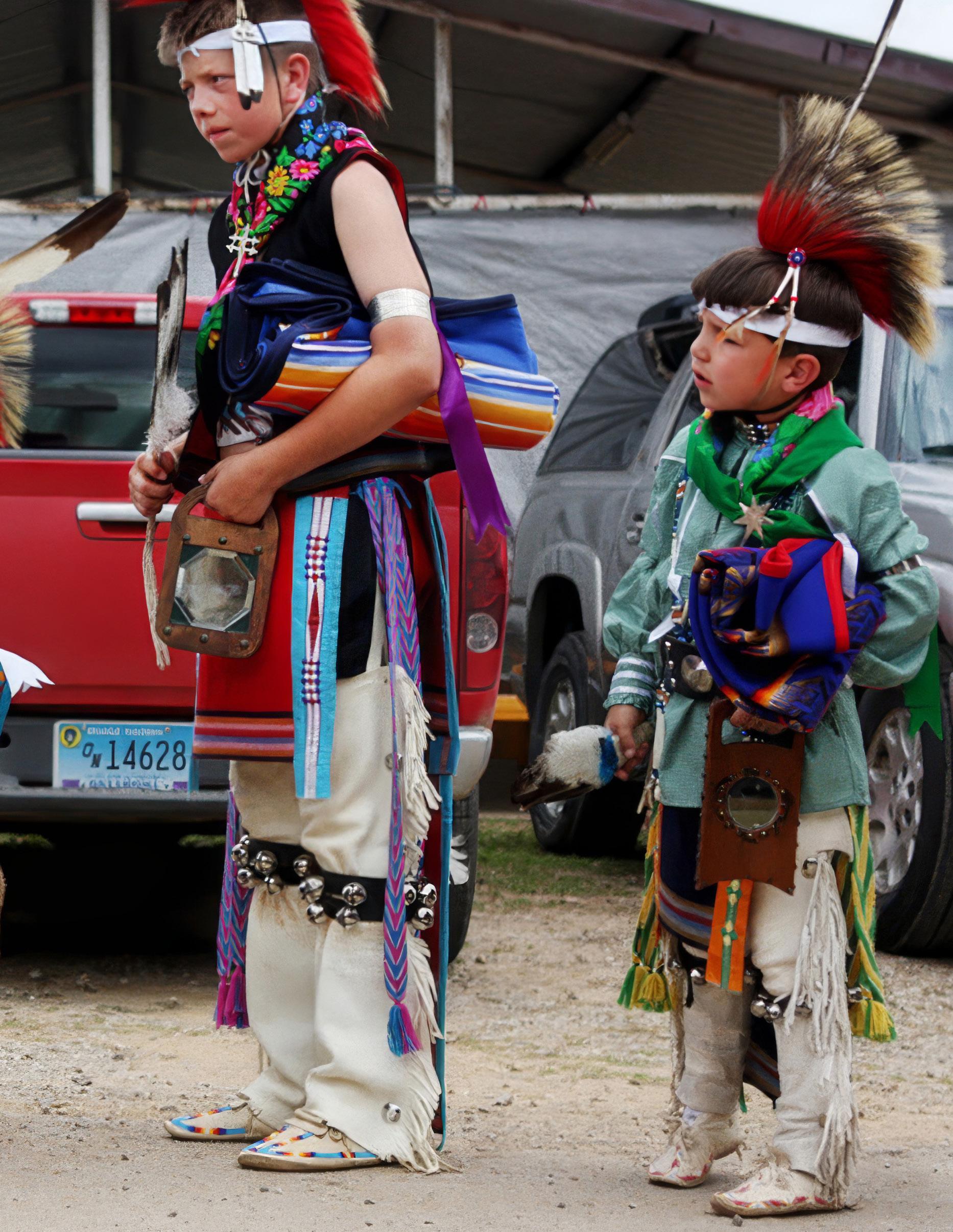
Residents should feel like they can travel, once again providing them with the dignity and autonomy that all people deserve.
While some communities develop organically, that is less often the case for supportive housing projects. In these cases, planning ahead of time can ensure that the community develops appropriately. Size is important: Communities need to feel big enough that residents don’t feel claustrophobic but small enough to provide comfort and familiarity. Master planning professionals recognize the importance of scale and the ability to plan for the future, creating spaces that can be developed further as needs arise. Density, walkability, and layout are among the many specific concerns that master planning experts will consider when creating supportive housing developments.
The Role of Restorative Justice in Supportive Housing
The word justice means different things in different communities. Justice in Indigenous communities is used as a means of conflict and dispute resolution that improves the lives of all who participate (Sacred Justice, 2021).
Native Justice can include decisions made in Tribal courts or dispute resolution around a peacemaking circle. Whatever the methodology, it requires compassion, honesty, and the preservation of dignity for all involved.
Restorative justice is critical when developing effective supporting housing. Time in a safe, supportive environment provides residents with opportunities to come to terms with past wrongs, reach out to loved ones, and rebuild damaged relationships with the help of Tribal leaders, peacemakers, and community members. Resolution and restoration pave the way for meaningful – not punitive – action.
The spaces designated for these processes carry meaning and can imply dignity, equity, and fairness. In reference to the circular Pokagon Tribal Court, Chief Judge Michael Petoskey said:
“The beauty of the circular room is we have figured out how everything can be on the circle. The way that most people think about courts is that they generate winners and losers. We have found that kind of justice model does not fit our Tribal communities” (Sacred Justice, 2021).
The Pokagon Band’s Peacemaking Center is also a circular room with a traditional fire, allowing individuals to gather in a circle around the fire for understanding and forgiveness. Creating physical spaces that allow for peacemaking while also allowing for cultural connection, healing, and dignity can make a significant impact in supportive housing facilities.
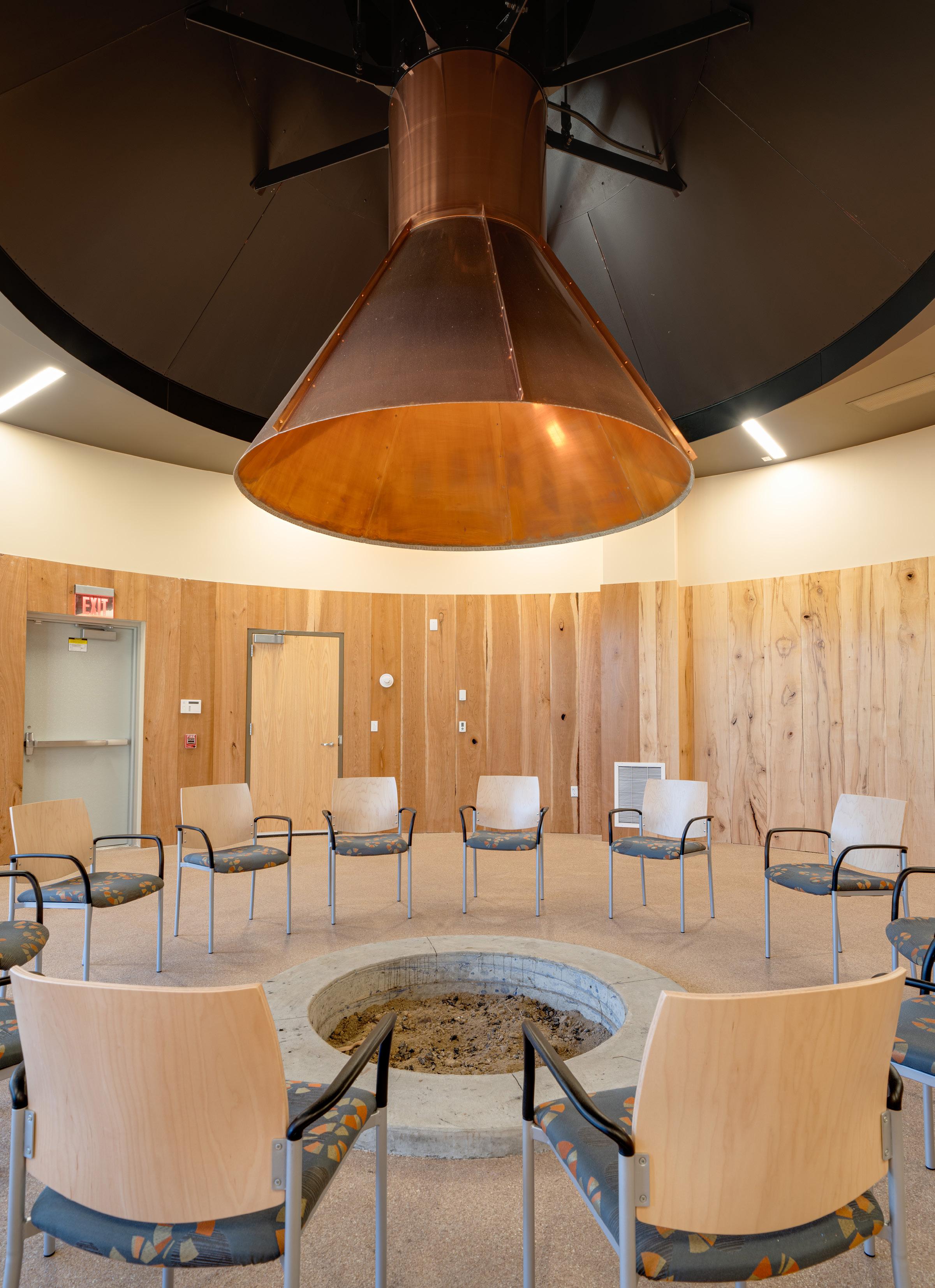
Pokagon Tribal Court & Peacemaking Center
Pokagon Band of Potawatomi Dowagic, Michian
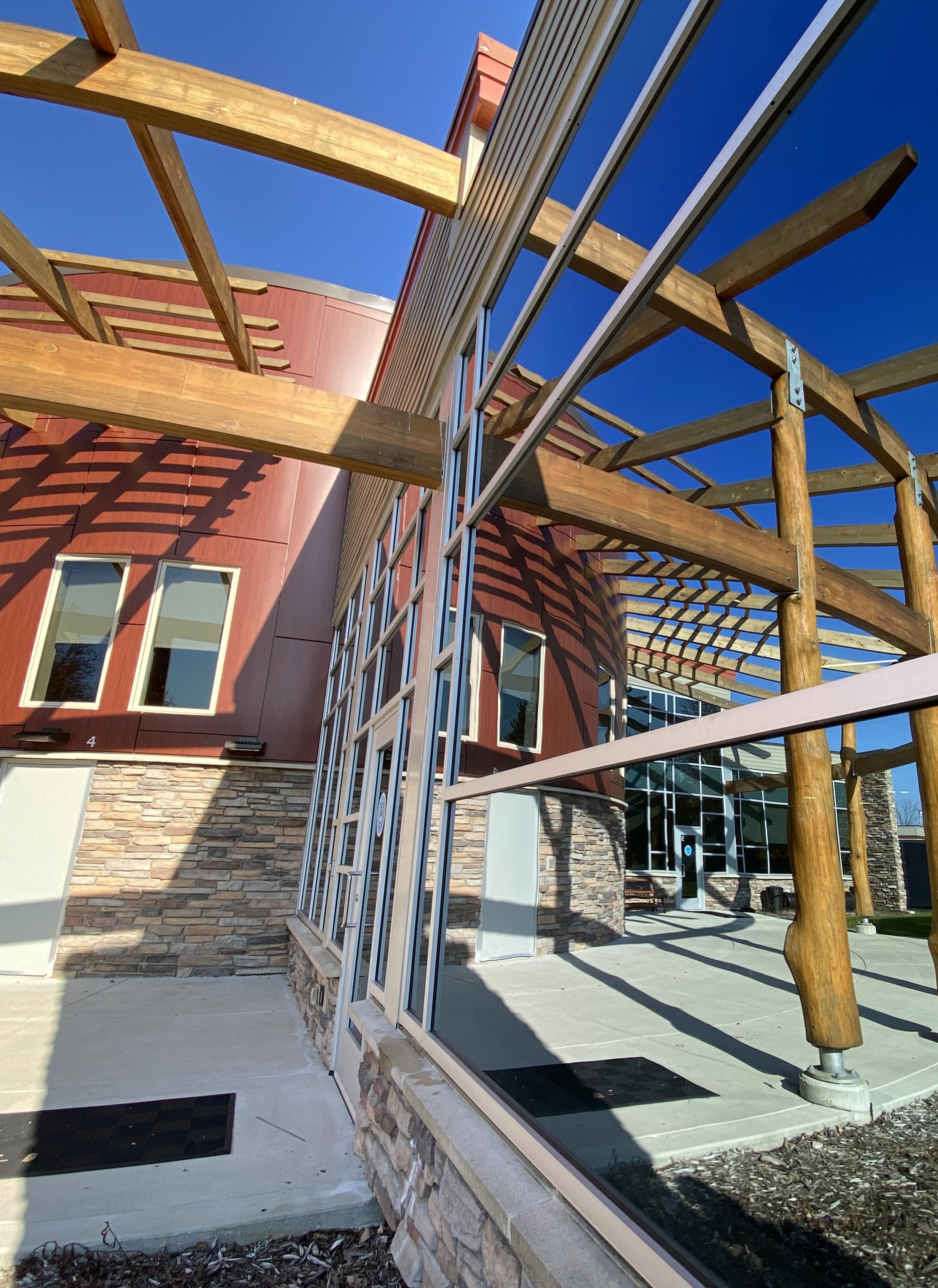
Pokagon Tribal Court & Peacemaking Center
Pokagon Band of Potawatomi Dowagic, Michian
Justice Outcomes Through Supportive Housing
Many of the individuals in supportive housing are involved in the criminal justice system to some degree. They may need legal counsel or seek peace after times of turmoil. Counseling, access to programming, and community fellowship are necessary for all supportive housing contexts. When planning a supportive housing development, designs should include spaces that facilitate both formal and organic forms of peacemaking, relationship building, and interaction with the justice system.
Supportive housing has an incredible impact on justice outcomes, particularly when “wrap-around” services such as courts, judges, police, fire, EMS, and others are involved in the early stages of design. These entities interface with these vulnerable populations often and can offer design insights on how to best integrate services that connect to supportive housing goals.
Resources are limited, but when they can be invested into supportive housing for the most vulnerable, there is frequently a positive impact on the criminal justice system. Countless studies show a reduction
in arrests, convictions, and overnight jail stays for individuals who spend six months or more in supportive housing (Larimer, Malone, and Garner, 2009 ; The Heartland Alliance and Mid-America Institute on Poverty, 2009; Thomas et al., 2014 ). In many cases, this reduces stress on criminal justice systems, in turn reducing their costs.
“Spending money on supportive housing when budgets are tight is a difficult choice, but it can pay dividends to individuals and to communities who burden the costs of the criminal justice system.” – Steve VandenBussche, Former Vice President of Practice at Seven Generations Architecture + Engineering
It would be a grievous omission to discuss justice without recognizing the lack of justice provided to Native Americans for centuries. Work can and still must be done to ensure and protect Indigenous populations equity and sovereignty. On a micro-level, providing individuals with justice and fairness in times of personal struggle maintains dignity and sustains culture.
Conclusion
Psychologist Abraham Maslow is famed for developing a hierarchy of needs that begins with physiological needs such as shelter and food and then extends to include safety, love and belonging, esteem, and self-actualization (Hoffman, 1988). While that psychological framework is well known, fewer know that Maslow spent three months with the Northern Blackfoot Indigenous Peoples in 1938. Maslow found that among the Blackfoot population, 80 to 90 percent "rated about as high in ego security as the most secure individuals in our own society, who compromise 5 to 10 percent at most" (Hoffman, 1988, p. 123). Those feelings of security were so high in the Blackfoot population because of the deep relationships and emotional ties in the community. Where there is connection, there can be security. Where there is security, there can be freedom, independence, and a belief in one's inherent value.
Supportive housing aims to create an environment where residents are given the tools and support needed for resiliency. In the contemporary Western mindset, supportive housing fixes problems. By going deeper, we see that supportive housing replicates the interconnected way of life that so many Indigenous peoples have long practiced. Combining design and planning experience with Indigenous wisdom and tradition makes it possible to develop effective, affordable housing that supports and sustains holistic health for individuals and communities.
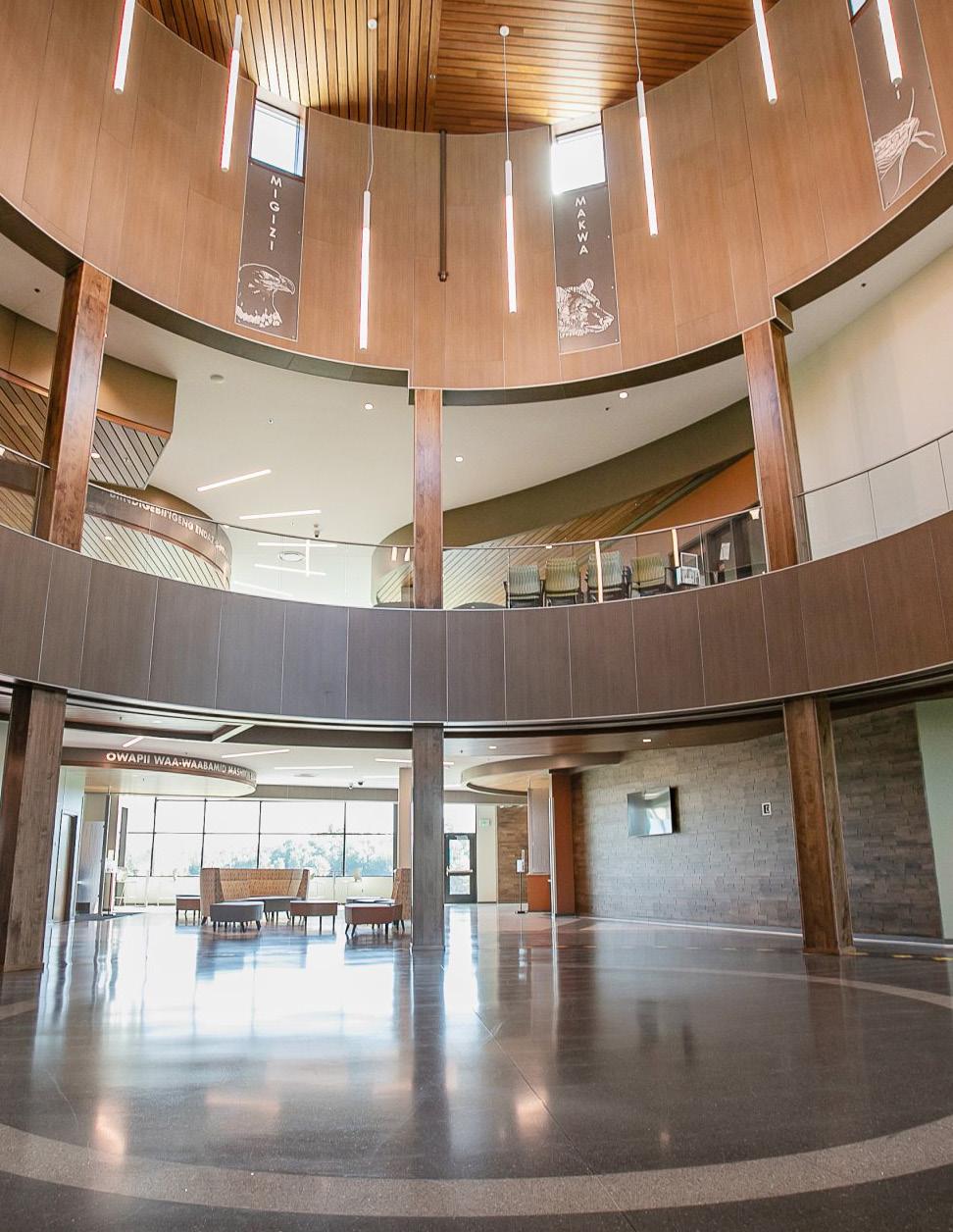
References:
Ahn, E., Moon, S., Kim, J., Jun, S., Yoon, S., Ko, Y., Cho, H., & Song, J. (2016). Linking suicide attempt patients with community support programs: The effect of a crisis intervention team operating in the emergency department. Annals of Emergency Medicine, 68(4), p. 119.
Bassett, D., Tsosie, U., & Nannauck, S. (2012). "Our Culture is Medicine": Perspectives of Native Healers on Posttrauma Recovery Among American Indian and Alaska Native Patients. The Permanente Journal, 16(1), p. 19-27.
Beaulieu-Banks, R., Sundeen, K., and Christopherson, K. (2018). American Indian Perspectives on Healing from Historical Trauma: An Indigenous Inquiry. Retrieved from Sophia, the St. Catherine University repository website: https://sophia. stkate.edu/cgi/viewcontent.cgi?article=1017&context=ma_hhs
Bowe, M. (2021) The mental health benefits of community helping during crisis: Coordinated helping, community identification and sense of unity during the COVID-19 pandemic. Journal of Community & Applied Social Psychology.
Carpiano, R., & Hystad, P. (2011). "Sense of Community Belonging" in health surveys: What social capital is it measuring? Health & Place, 17(2), pp. 606-617.
Coope, J. (2020). Indigenous Knowledge and Techno-Scientific Modernity: "Hierarchical Integration." Ecopsychology, 12(2), p. 151-157.
Creed, G. (2006). The seductions of community: emancipations, oppressions, quandaries. School of American Research Press: Santa Fe, New Mexico.
Dohler, E., Bailey, P., Rice, D., & Katch, H. (2016). Supportive Housing Helps Vulnerable People Live and Thrive in the Community. Center on Budget and Policy Priorities.
Gilmer, T., Henwood, B., & Katz, L. (2014). Aging in place within permanent supportive housing. International Journal of Geriatric Psychiatry, (30), 80-87.
Hannigan, T., & Wagner, S. (2003, June). Developing the "Support" in Supportive Housing: A Guide to Providing Services in Housing. Center for Urban Community Services. Retrieved from: https://www.csh.org/wp-content/uploads/2011/12/ Tool_DevelopingSupport_Guide.pdf
Hoffman, E. (1988). The Right to be Human: A Biography of Abraham Maslow, Edited by Jeremy P. Tarcher.
Huisman, E., Morales, E., Hoof, J. V., & Kort, H. (2012). Healing environment: A review of the impact of physical environmental factors on users. Building and Environment, 58, p. 70-80.
Human Spaces. (2016). The Global Impact of Biophilic
Design in the Workplace. Retrieved from: https:// greenplantsforgreenbuildings.org/wp-content/ uploads/2015/08/Human-Spaces-Report-Biophilic-Global_ Impact_Biophilic_Design.pdf.
Hystad, P., and Carpiano, R. (2012) Sense of CommunityBelonging and Health-Behaviour Change in Canada. Journal of Epidemiology & Community Health, 66(3), p. 277.
Kellert, S. (2008). Biophilic Design: The Theory, Science, and Practice of Bringing Buildings to Life. Wiley: Hoboken, NJ. Lamier, M., Malone, D., and Garner, M. (2009). Health Care and Public Service Use and Costs Before and After Provision of Housing for Chronically Homeless Persons with Severe Alcohol Problems. JAMA Network.
Martinez, T., & Burt, M. (2006). Impact of Permanent Supportive Housing on the Use of Acute Care Health Services by Homeless Adults. Psychiatric Services, 57(7), 992-999. Retrieved from: https://ps.psychiatryonline.org/ doi/full/10.1176/ps.2006.57.7.992
Michigan's Campaign to End Homelessness. (2021). Permanent Supportive Housing. Retrieved from: https:// www.michigan.gov/mcteh/0,8782,7-349-78550---,00.html.
National Alliance to End Homelessness. (2021). State of Homelessness: 2021 Edition. National Alliance to End Homelessness. Retrieved from: https://endhomelessness. org/homelessness-in-america/homelessness-statistics/ state-of-homelessness-2021/
Owczarzak, J., Dickson-Gomez, J., Convey, M., & Weeks, M. (2013). What is "support" in supportive housing: Client and service providers' perspectives. Human Organization, 72(3), pp. 254-262.
Ruck, K. (2020). The health benefits of community gardening. Kai Tiaki: Nursing New Zealand, 26(6), 30-31.
Seven Generations Architecture + Engineering. (2021). Sacred Justice. Retrieved from: https://vimeo.com/586803597.
Spires, A. (2019). Introduction to the Special Issue on Indigenous Decolonization. Ecopsychology, 11(3), p. 141-144.
The Heartland Alliance and Mid-America Institute on Poverty. (2009, April). Supportive Housing in Illinois: A Wise Investment. Thomas, L., Shears, J., Clapsadl Pate, M., & Priester, M. (2014). Moore Place Permanent Supportive Housing Evaluation Study: Year 1 Report. UNC Charlotte College of Health and Human Services.
VandenBussche, S., personal communication, November 2021.
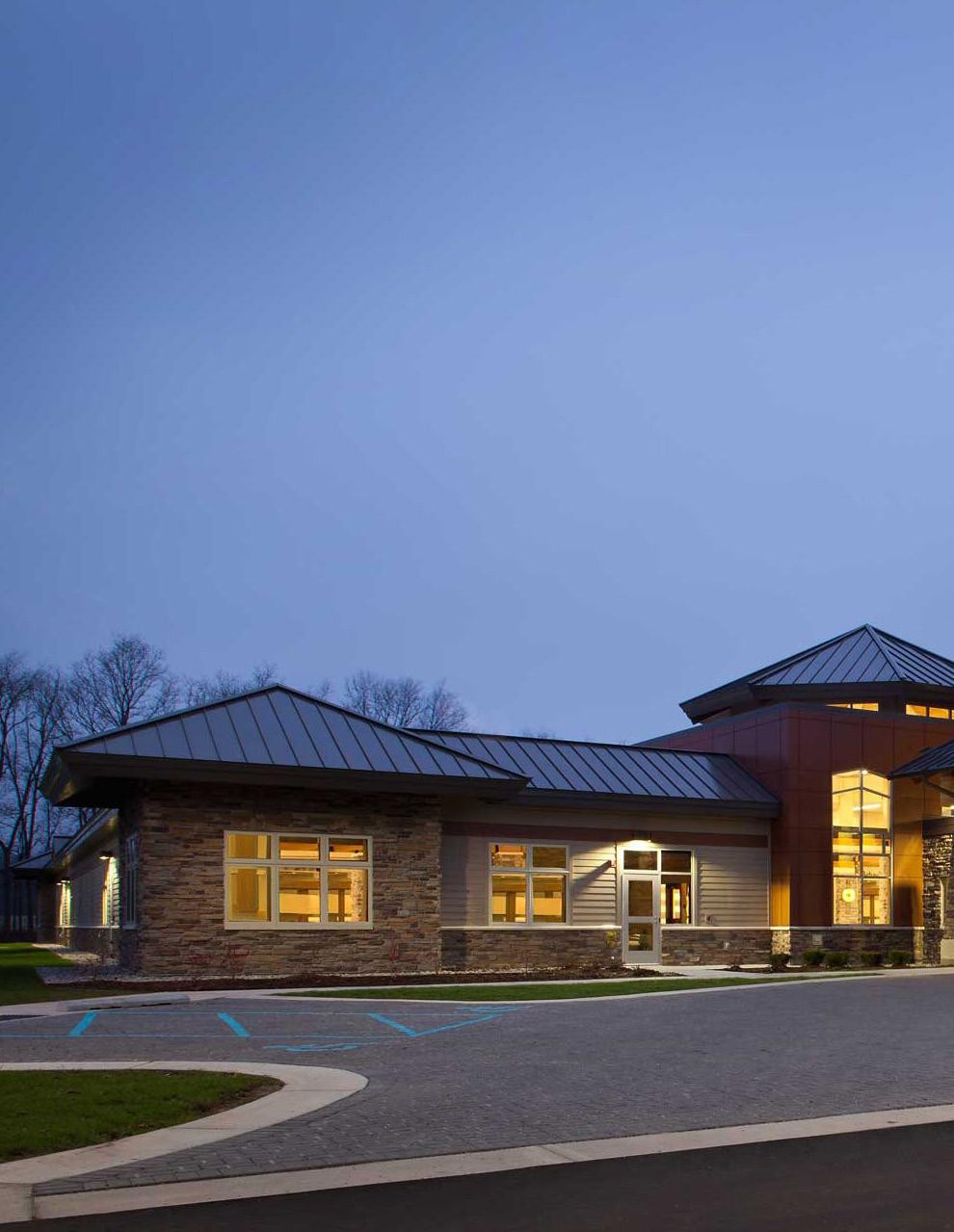

Tribal Ownership. Indigenous Design.
The Bodwé group, which includes Seven Generations Architecture + Engineering, WBK Engineering, Blue Star Integrative Studio and The Steelhead Engineering Company, is wholly owned by Mno-Bmadsen, the non-gaming investment enterprise of the Pokagon Band of Potawatomi. Mno-Bmadsen, which means “the good path,” was formed in 2012 to diversify the tribe’s business interests to ensure economic sustainability for future generations. Under Mno-Bmadsen, the companies of Bodwé serve the Pokagon Band and its people, building resources for continued growth and sovereignty.
The Bodéwadmi people, or Potawatomi, have long been identified as the keepers of the fire. Our name, Bodwé, comes from their rich history and language. Bodwé means to build a fire for someone; to meaningfully serve another. At Bodwé Group, we make notable impact on how people live and move in relationship with built and natural environments, providing unique services in architecture, interior design, master planning, environmental consulting, and structural, civil, and MEP engineering. We collaborate with client partners that span the country and represent federal, healthcare, private, and Indigenous projects.
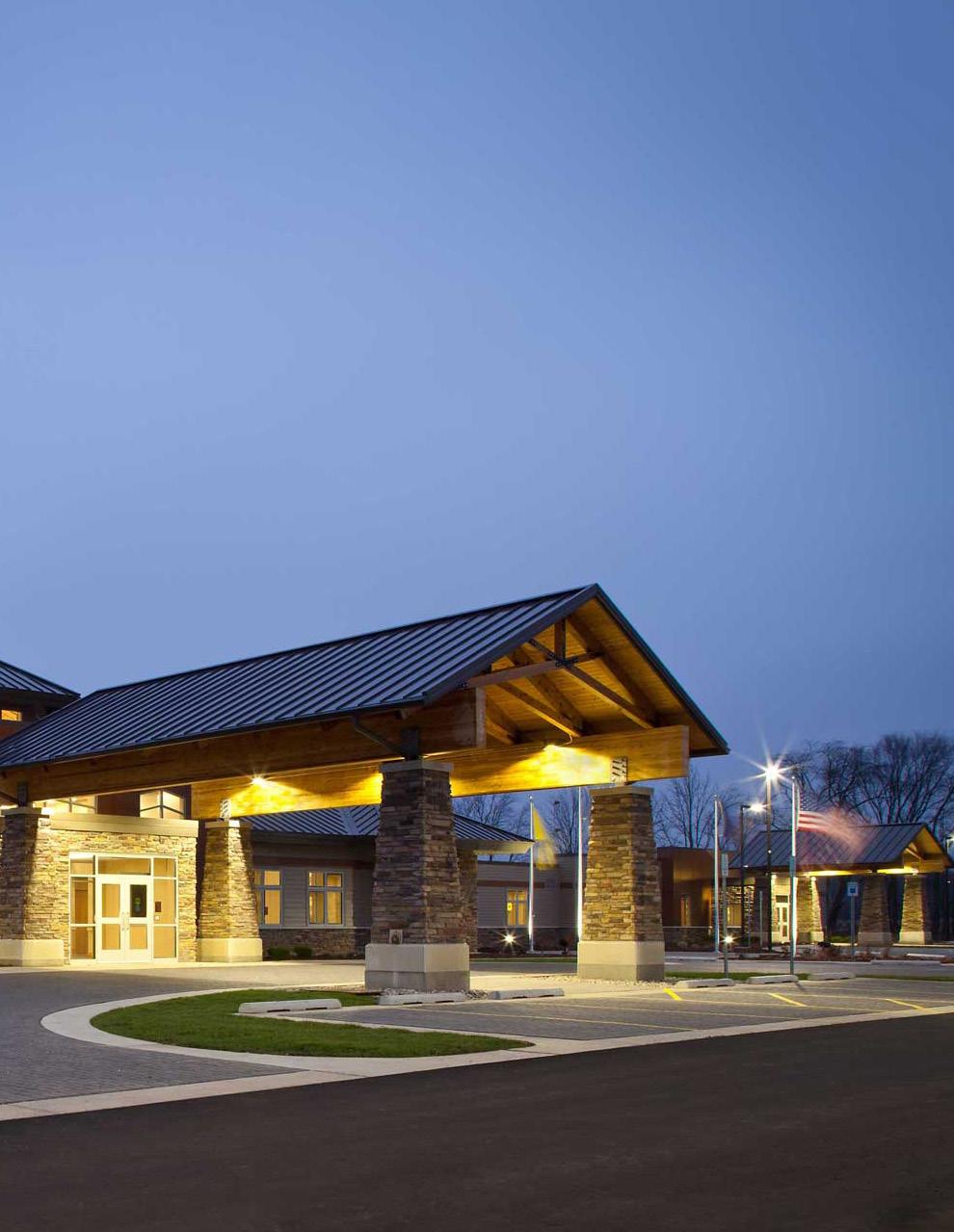
Pokagon Health Services + Family Activity Center
Pokagon Band of Potawatomi Dowagiac, Michigan
Ho-Chunk Housing and Community Development
Agency Supportive Housing
Ho-Chunk Nation of Wisconsin
Black River Falls, Wisconsin
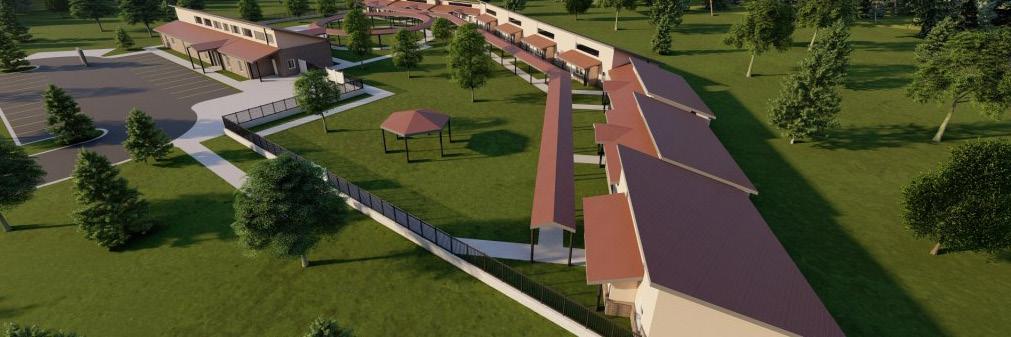
Projects Shown
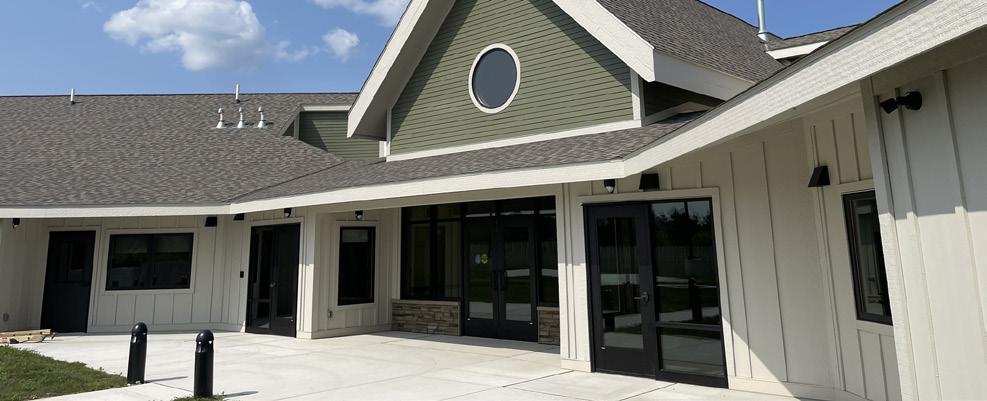

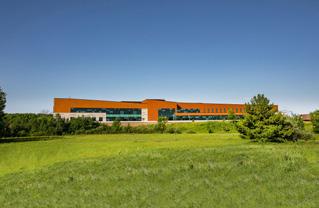
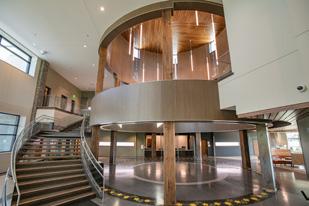
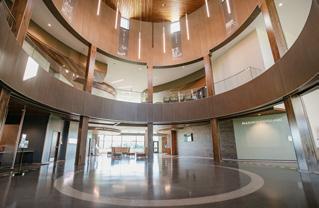

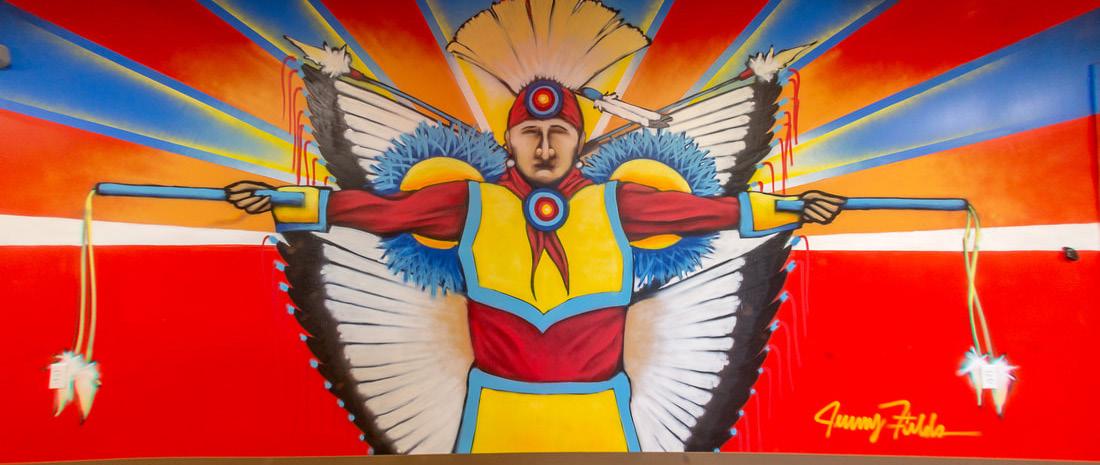
Saginaw Chippewa Indian Tribe
Permanent Supportive Housing
Saginaw Chippewa Indian Tribe of Michigan
Mt. Pleasant, Michigan
Designed to provide individuals and families with safe, affordable housing and assistance while recovering from substance abuse disorders, this 16-unit complex also incorporates exterior spaces for healing.

Mille Lacs Band District 1 Health Clinic
Mille Lacs Band of Ojibwe Onamia, Minnesota
The 78,000 sq. ft. D1 Clinic integrates Mille Lacs culture inside and out, and offers general practice, operatory dental, imaging, radiology, lab, physical therapy, and pharmacy services, as well as public and behavioral health and family services.
Second Street Housing
Little Traverse Bay Bands of Odawa Indians Harbor Springs, Michigan
Designed specifically to serve youth, this facility provides transitional supportive housing between shelter accommodations and market housing.


Ponca Hope & Recovery Center
Ponca Tribe of Oklahoma White Eagle, Oklahoma
Serving those seeking to win their battles with substance abuse, the Ponca residential treatment facility provides much needed support for a historically underserved community.

Pages IV, 14, 34
Oyate Health Clinic
Indian Health Service
Rapid City, South Dakota


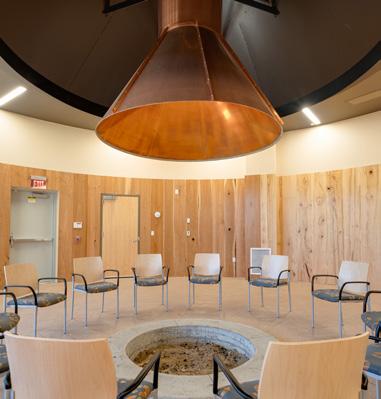
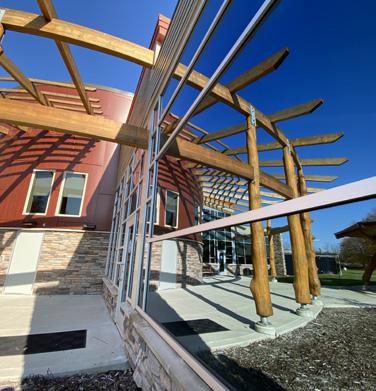
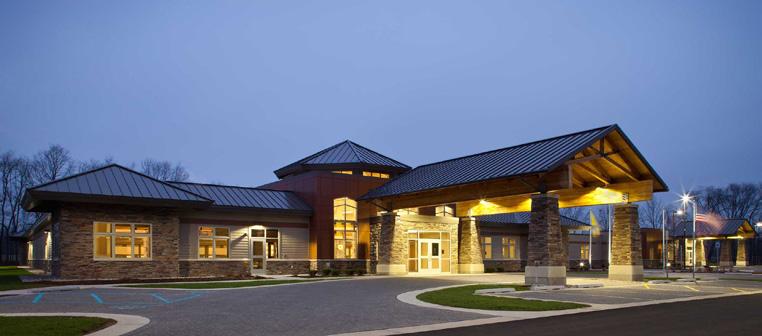
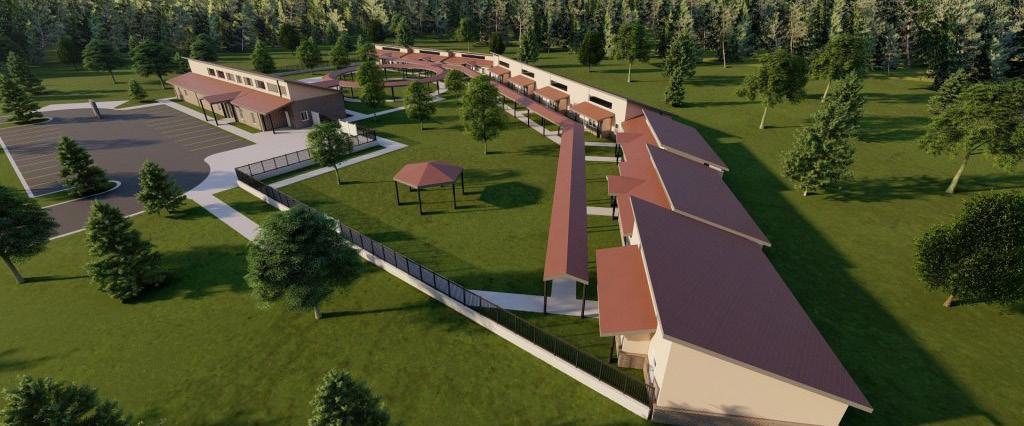
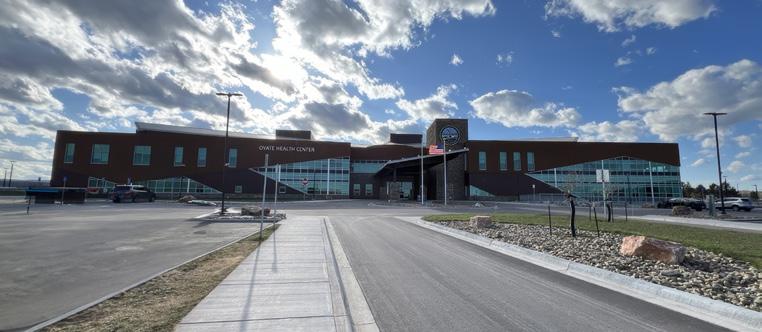
George Hawkins Memorial Treatment Center
Cheyenne and Arapaho Tribes
Clinton, Oklahoma
Renovation and expansion of this treatment center was informed through culturally responsive design and the collaborative “Medicine Mural,” created to inspire healing and teach culture.
Pokagon Tribal Court & Peacemaking Center
Pokagon Band of Potawatomi Dowagic, Michigan
Inspired by the power of the circle, this facility includes a circular courtroom, the Tribal police, public spaces, an outdoor fire pit pavilion, and an indoor peacemaking room with open fire where traditional talking circles are used today to heal individuals and the conflicts that fracture community.
Pokagon Health Services + Family Activity Center
Pokagon Band of Potawatomi Dowagic, Michigan



Supporting community healthcare and wellness, this LEED Goldcertified facility includes a medical clinic, dental care, and pharmacy, as well as traditional healing practices, behavioral health services, and an comprehensive fitness center and gymnasium.
Ho-Chunk Housing and Community Development Agency Supportive Housing
Ho-Chunk Nation of Wisconsin
Black River Falls, Wisconsin
Ensuring openness and maintaining security is key for this 10-unit, family-focused facility featuring a central courtyard, community gathering areas, and a community kitchen.
Oyate Health Clinic
Indian Health Service
Rapid City, South Dakota
Design for “patient-aligned care,” this LEED Goldcertified facility offers ambulatory care, ancillary services, behavioral health, and preventative wellness to serve the three Tribal communities in the region.


Pages 27, 28
